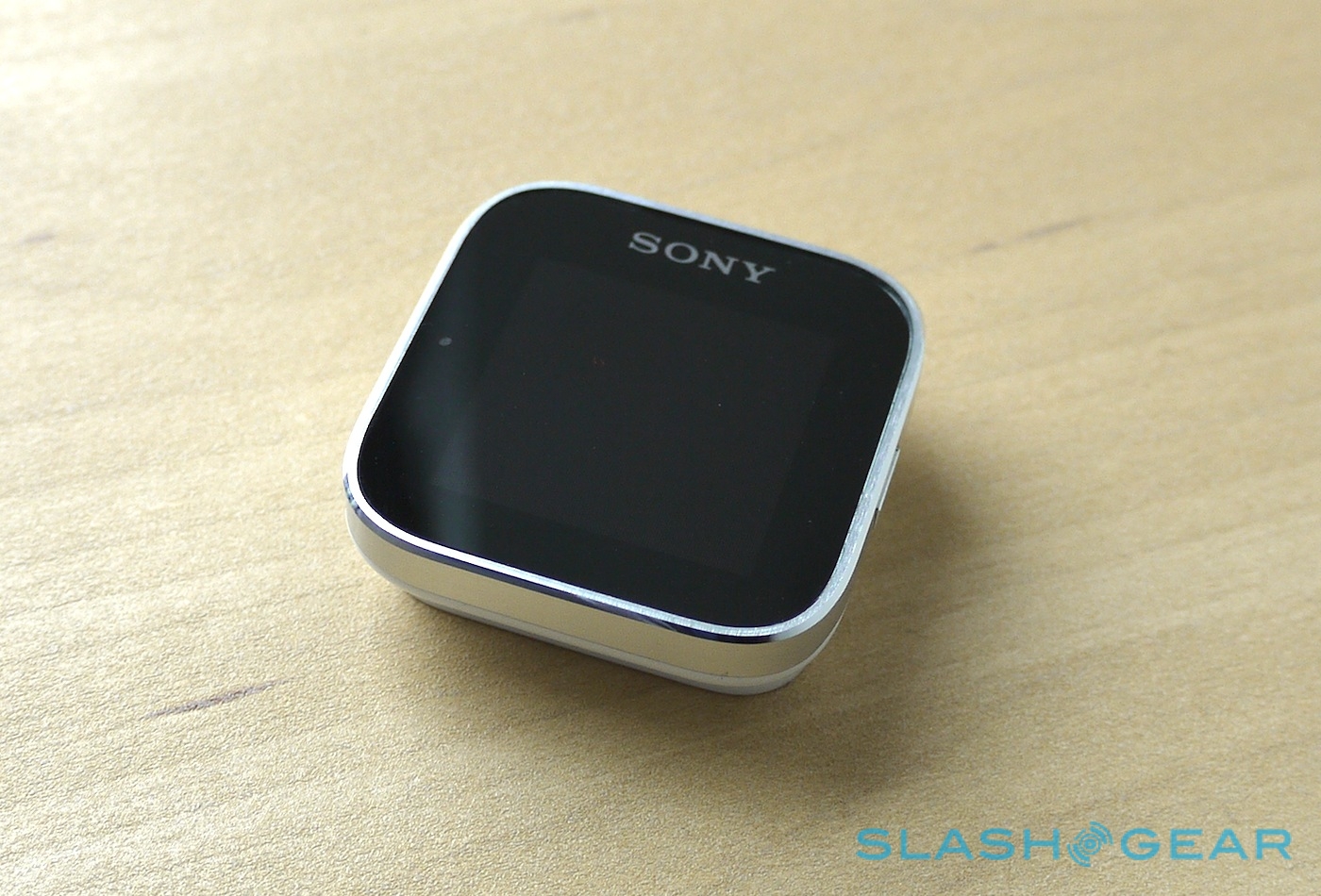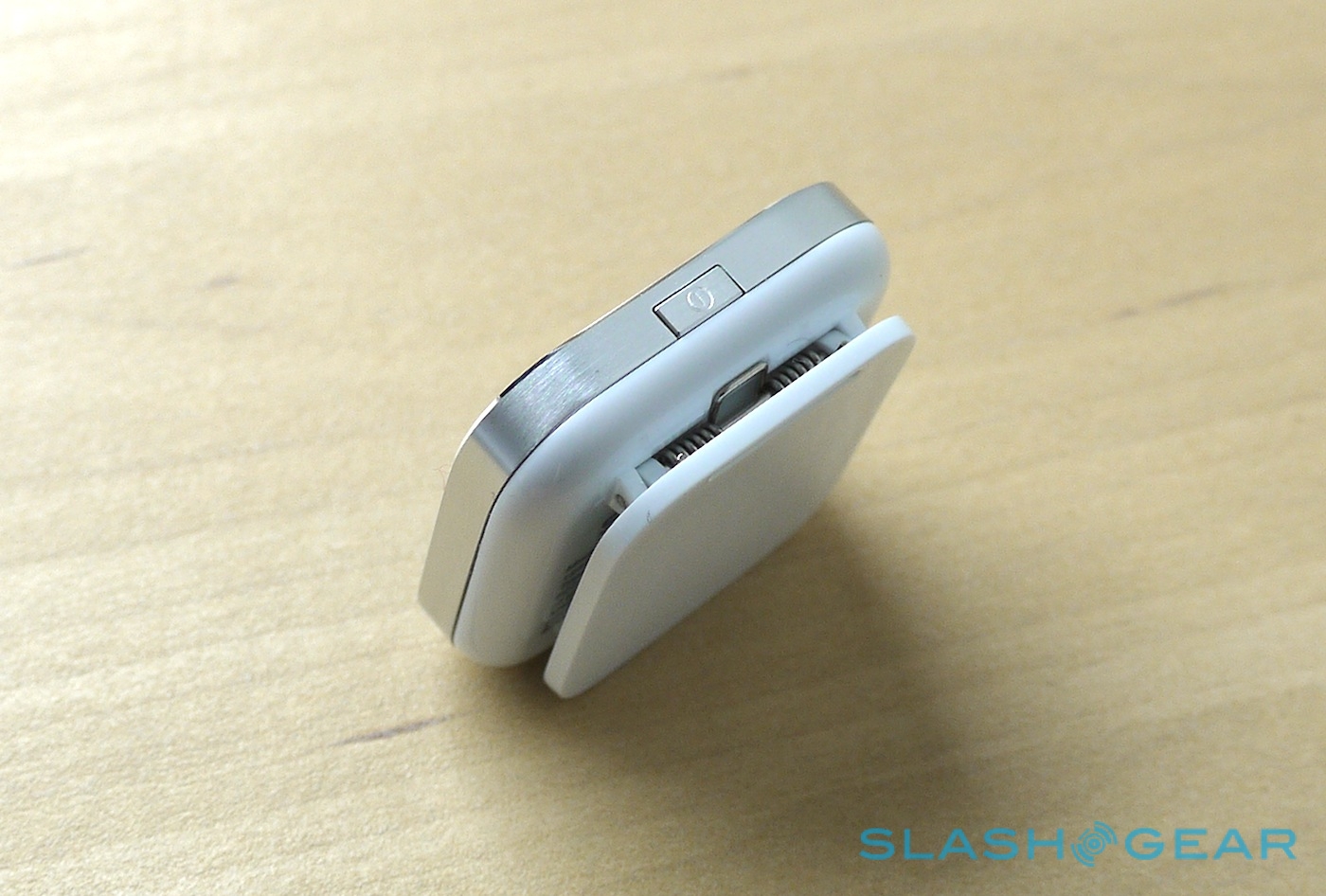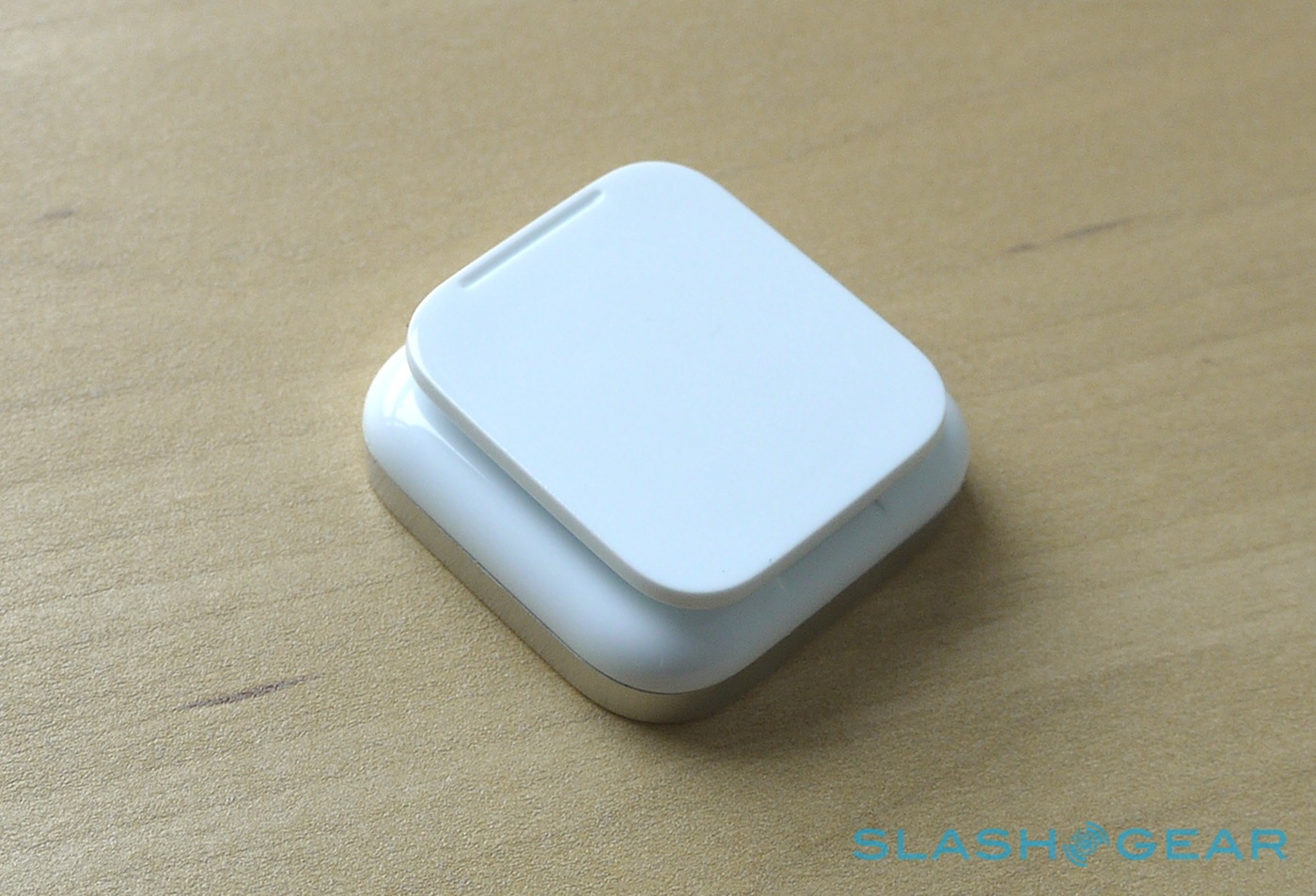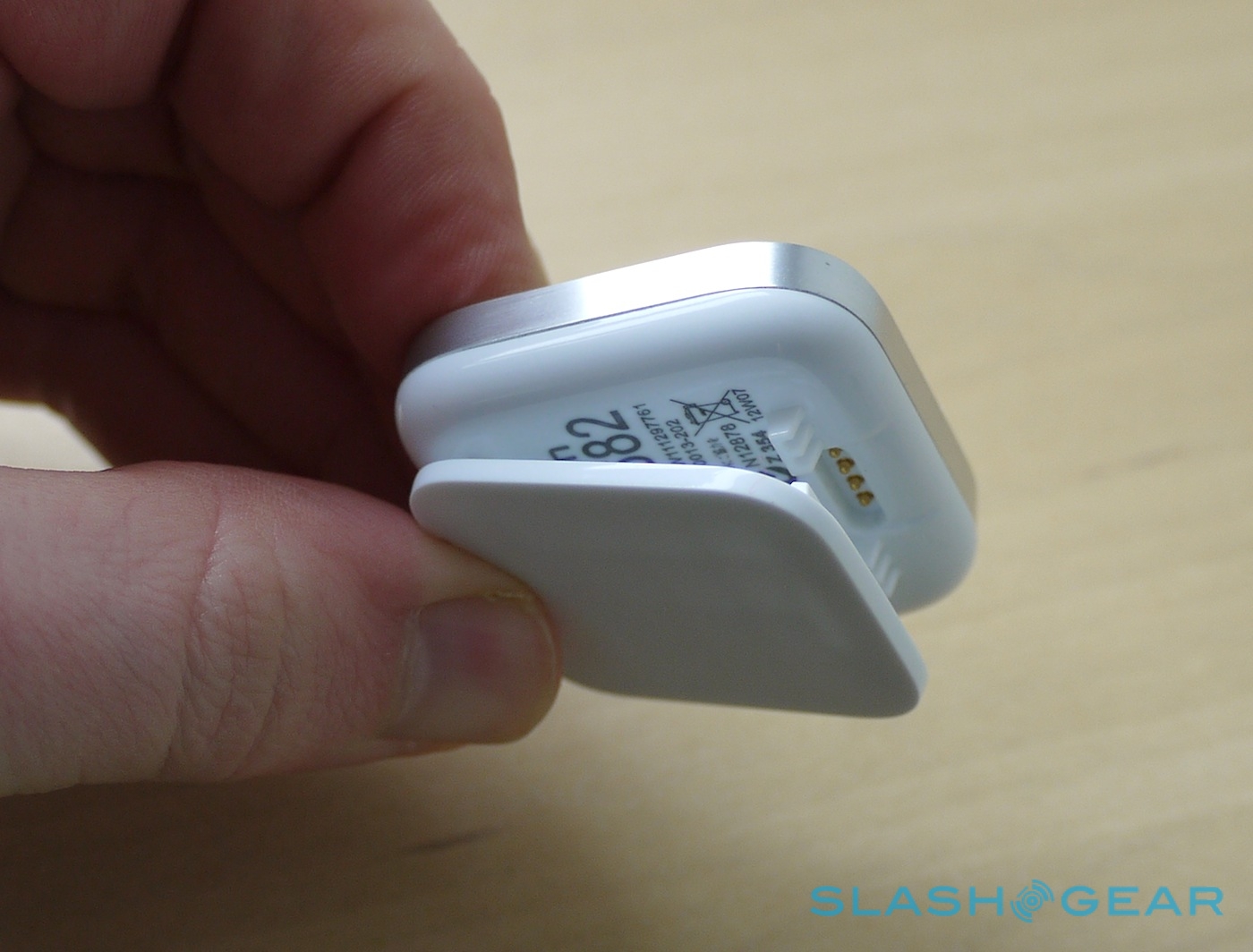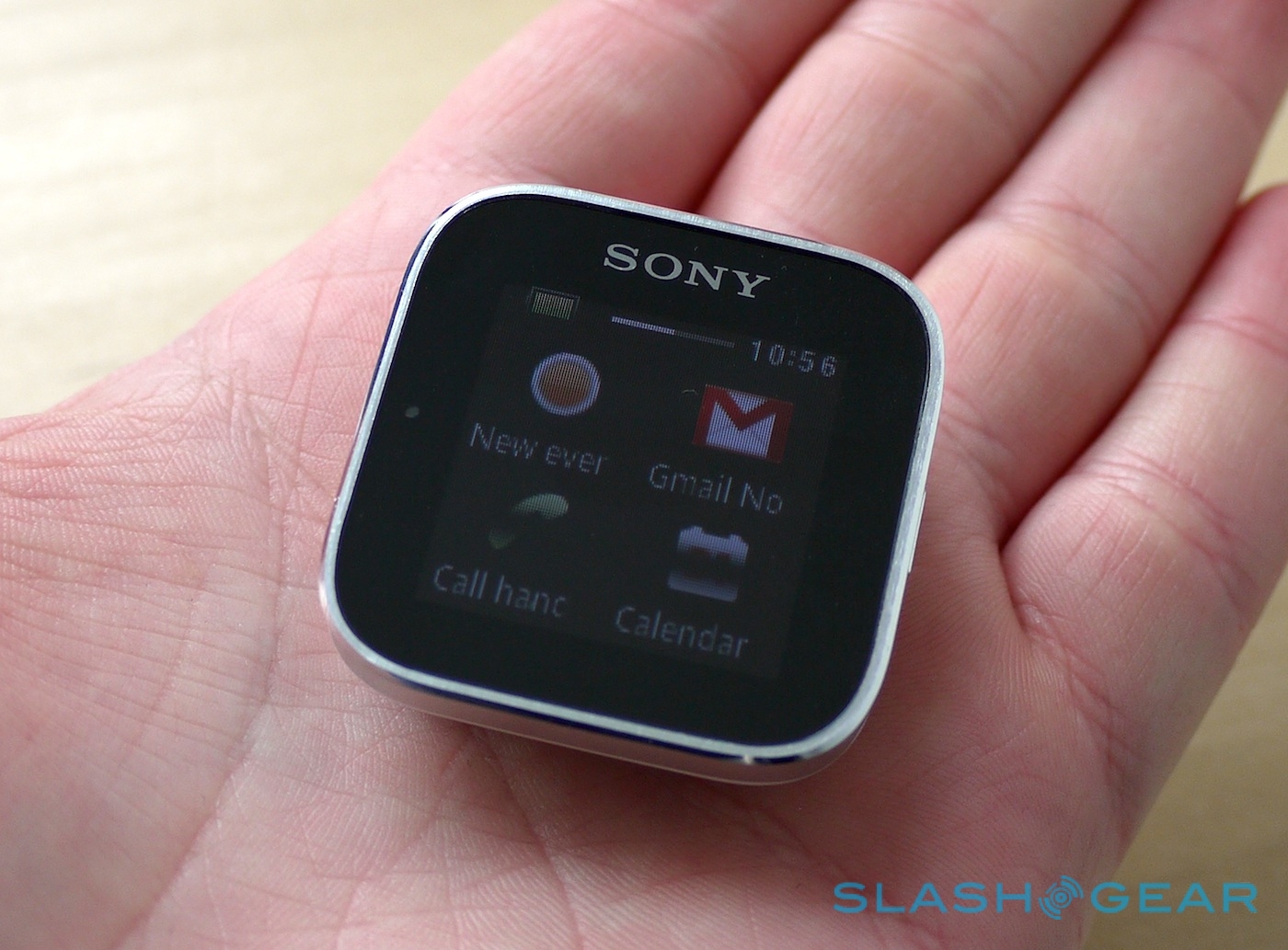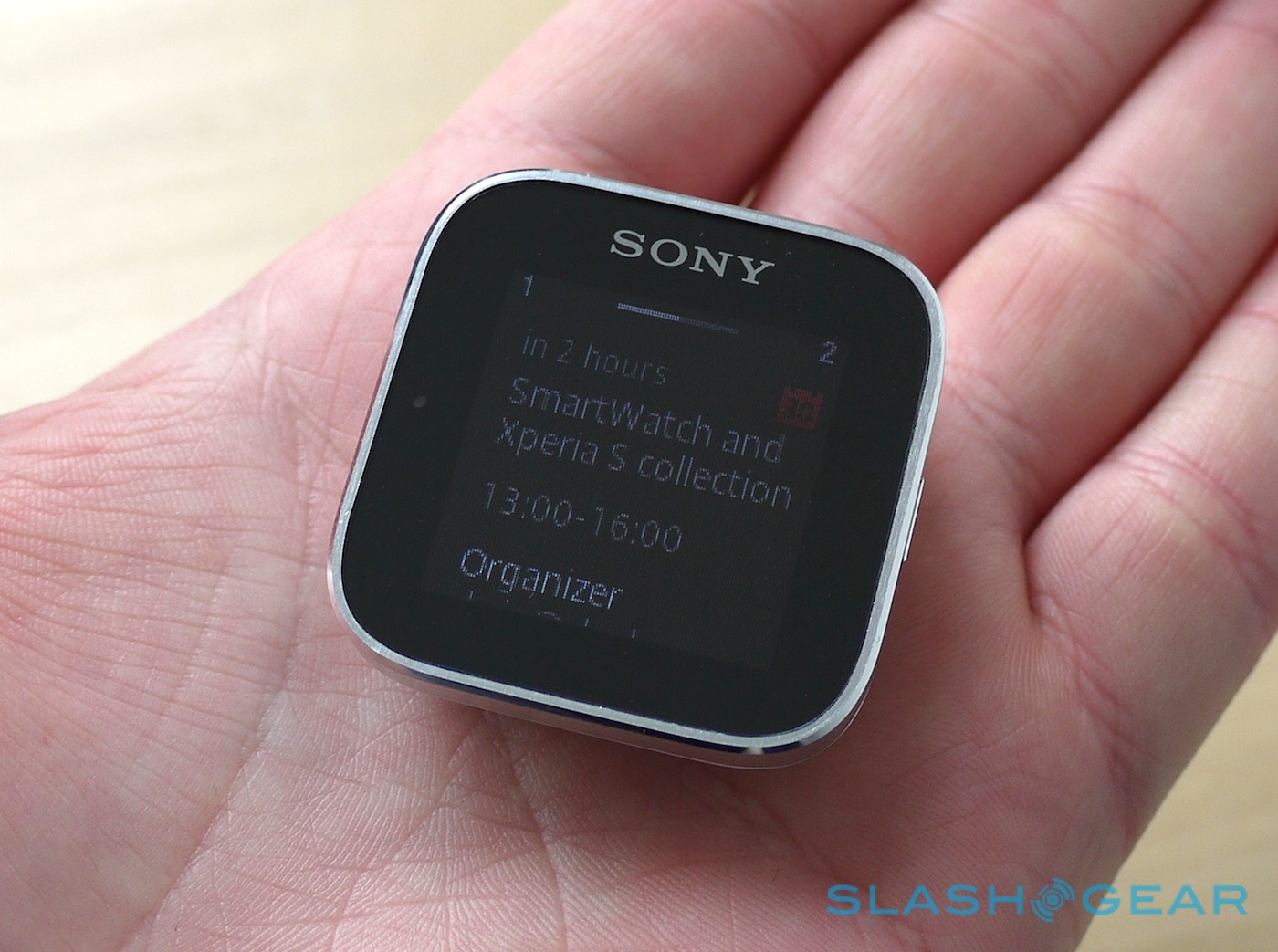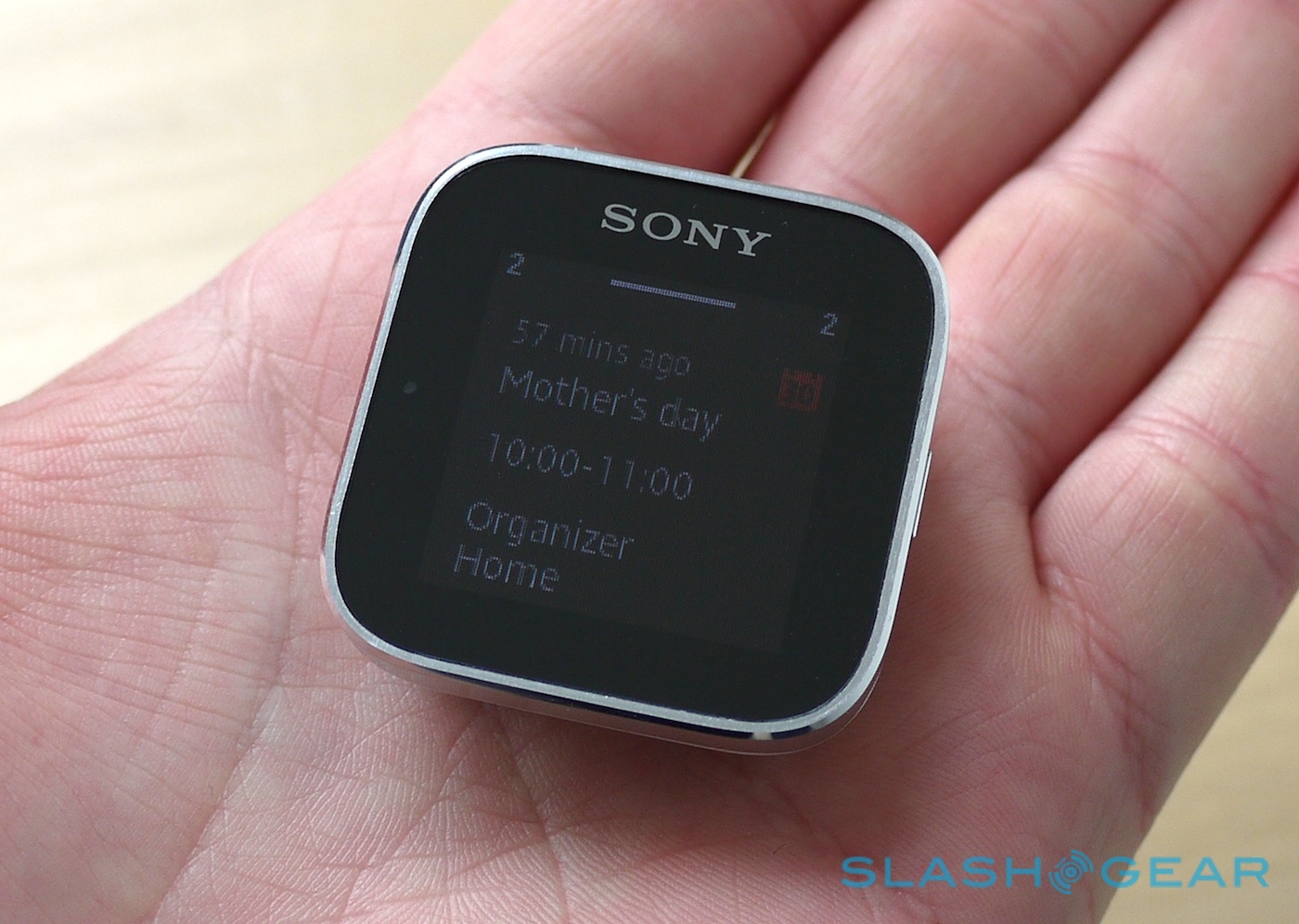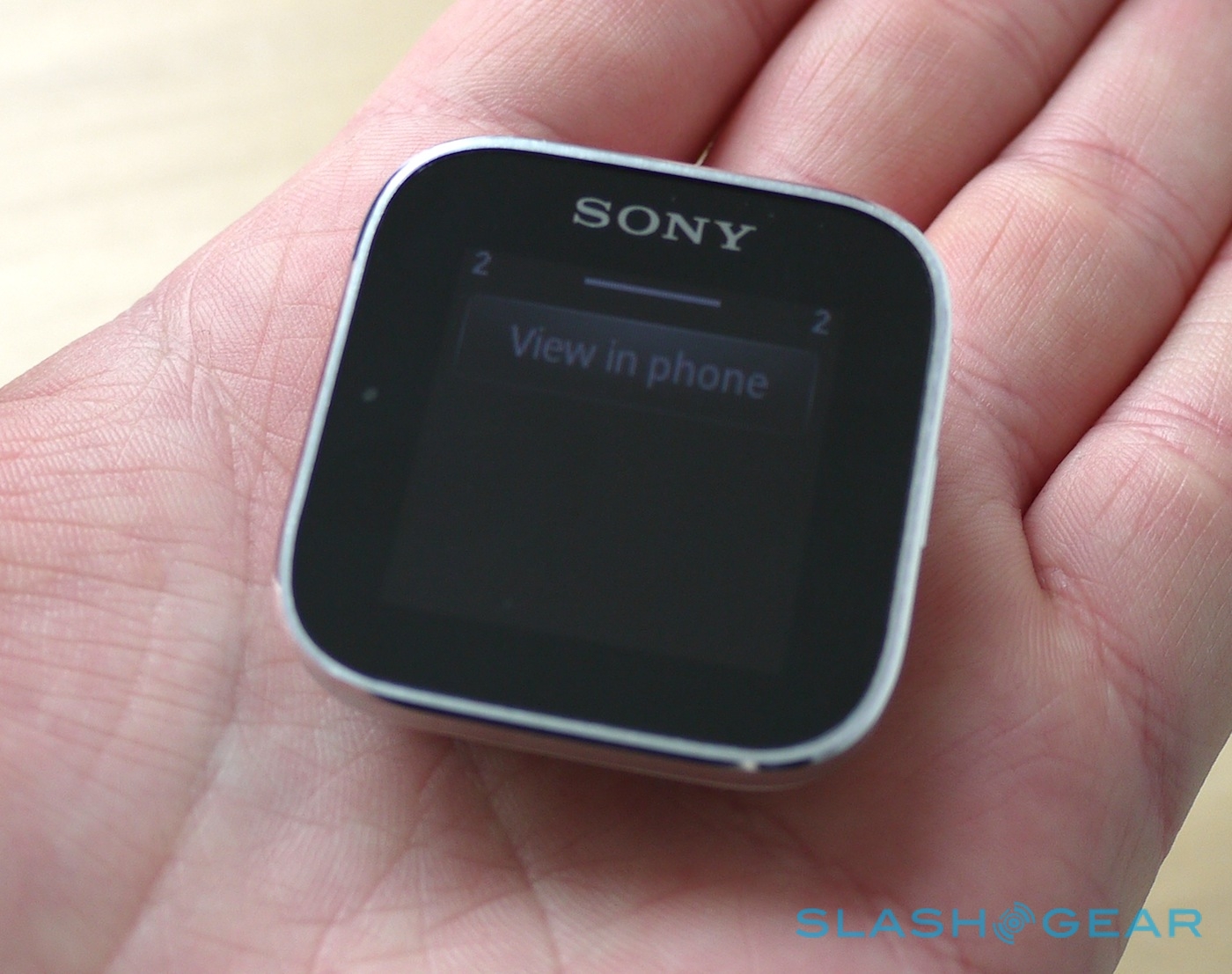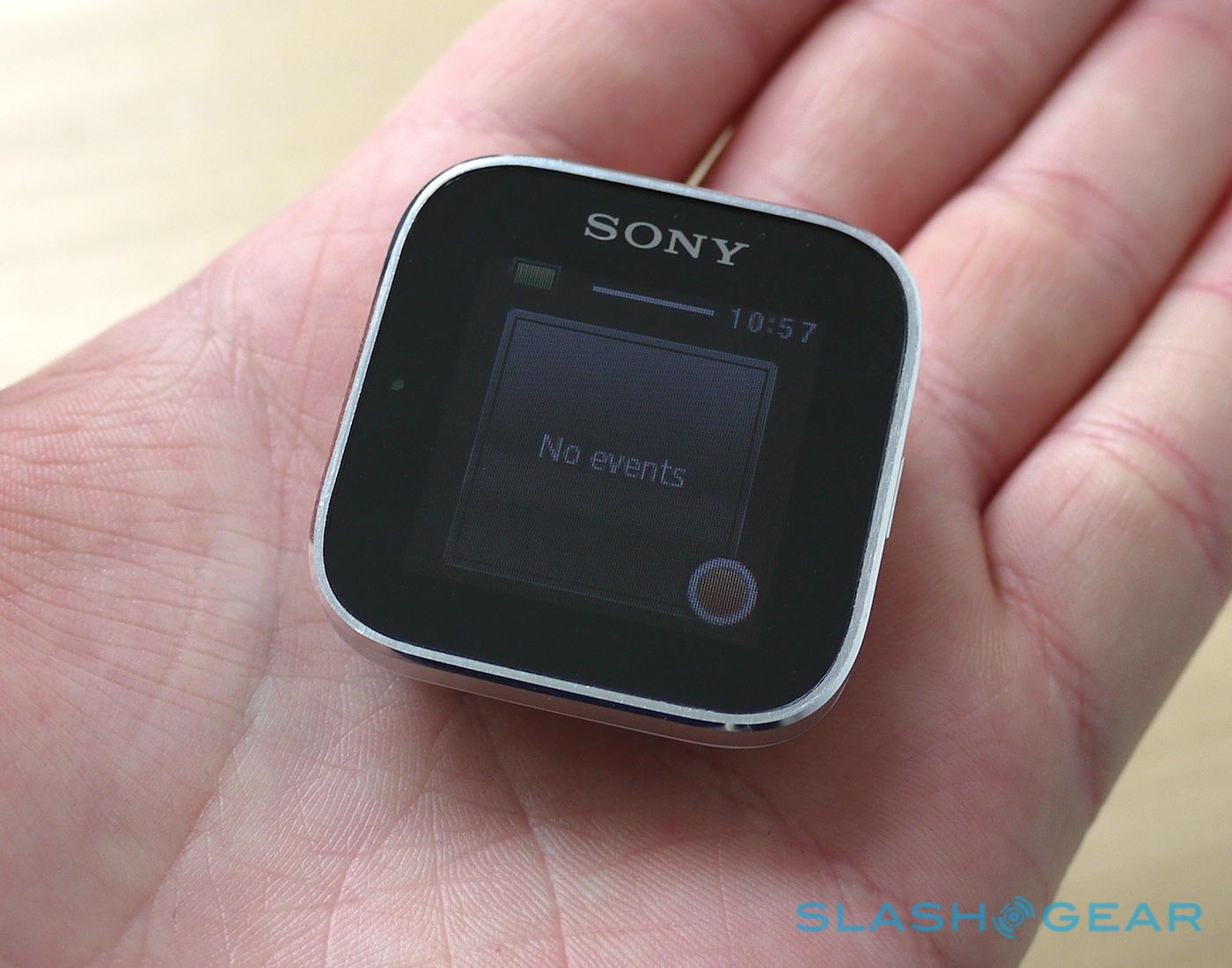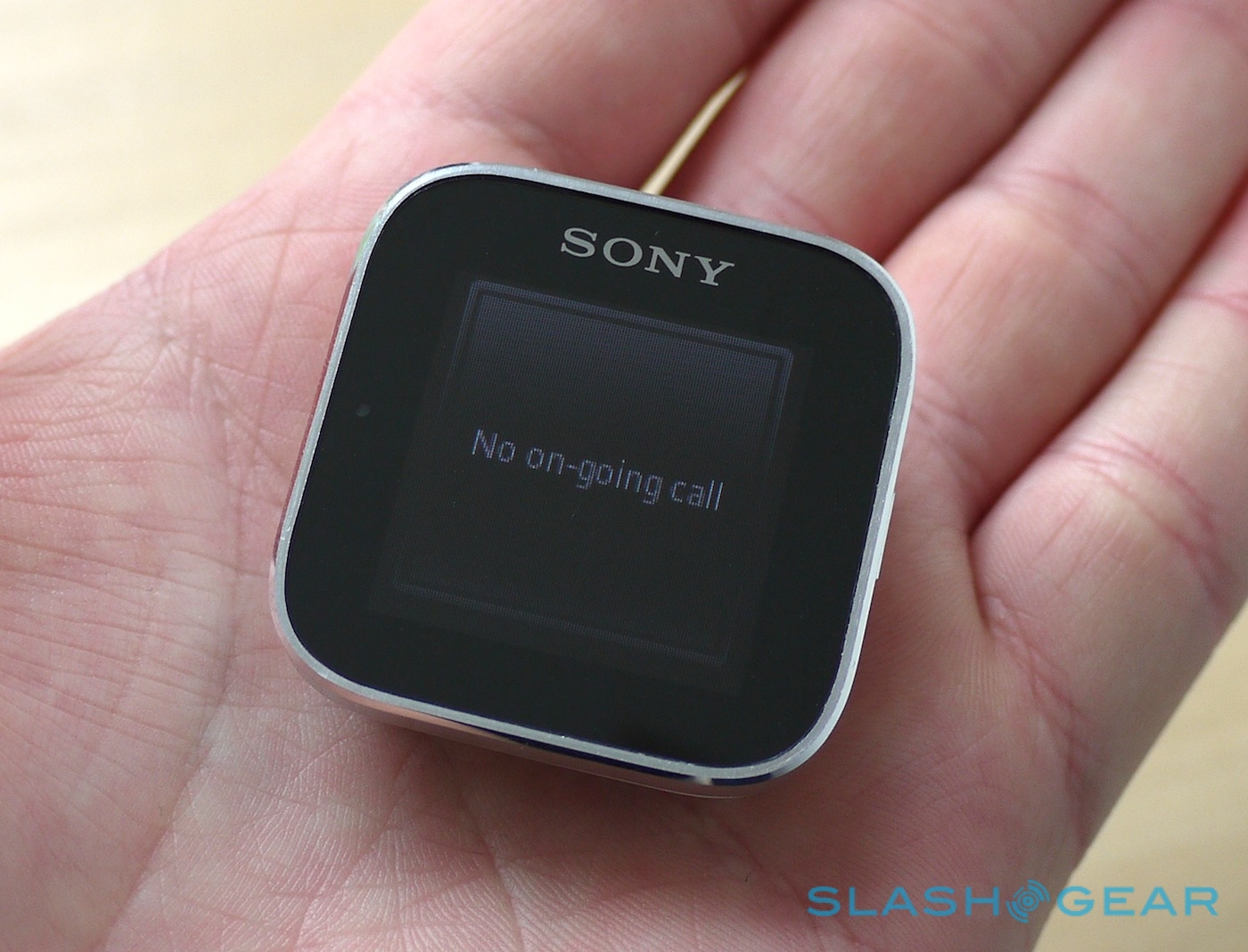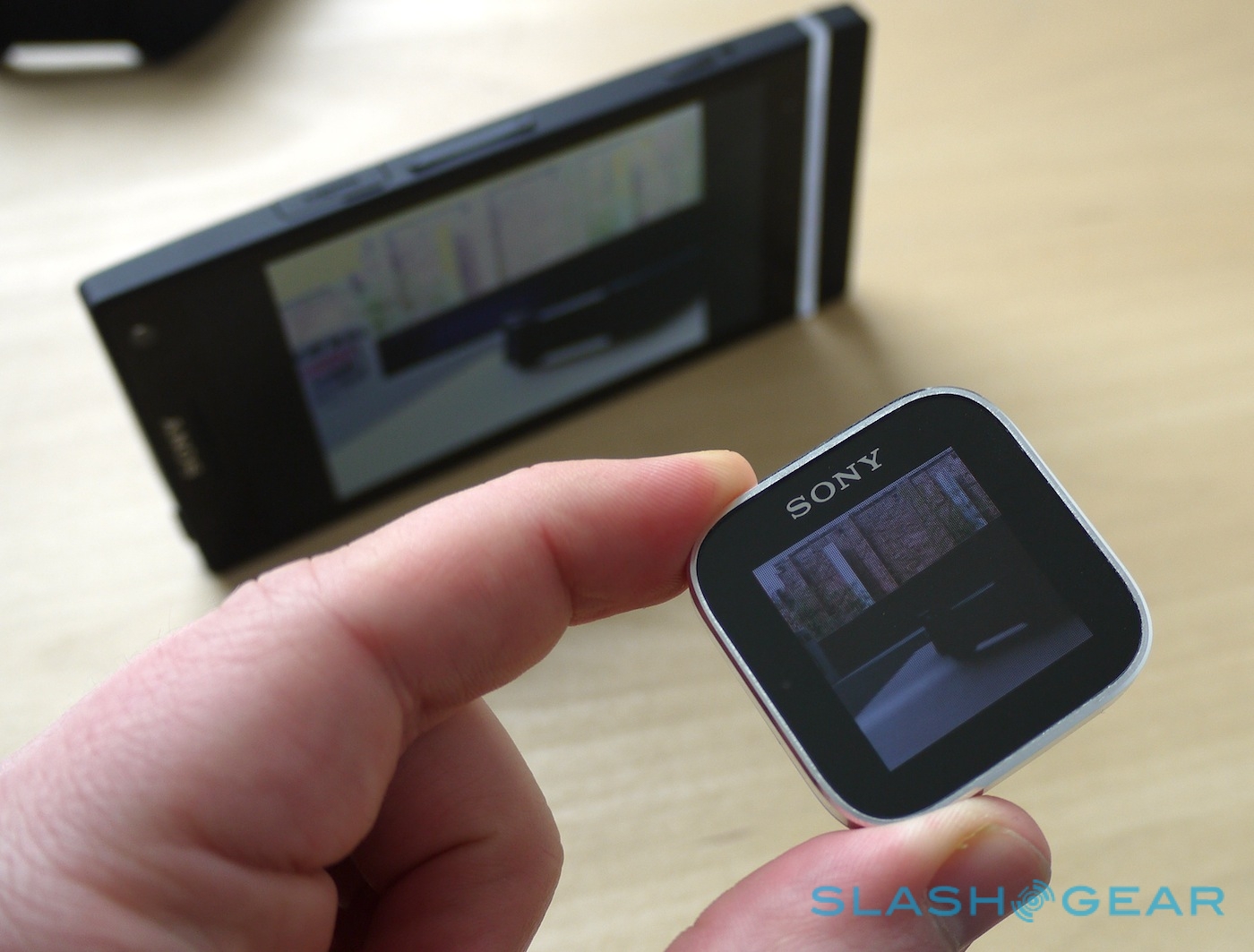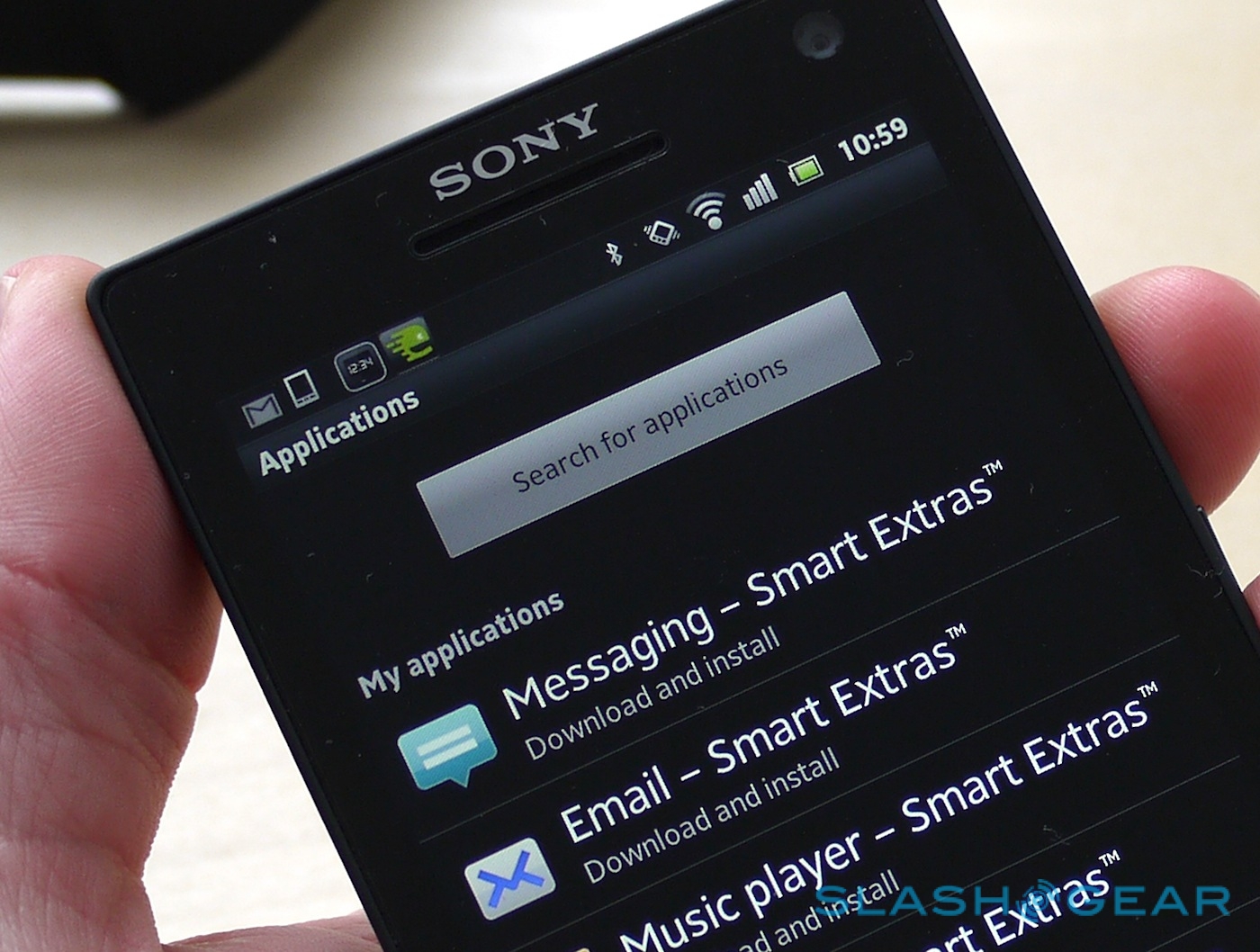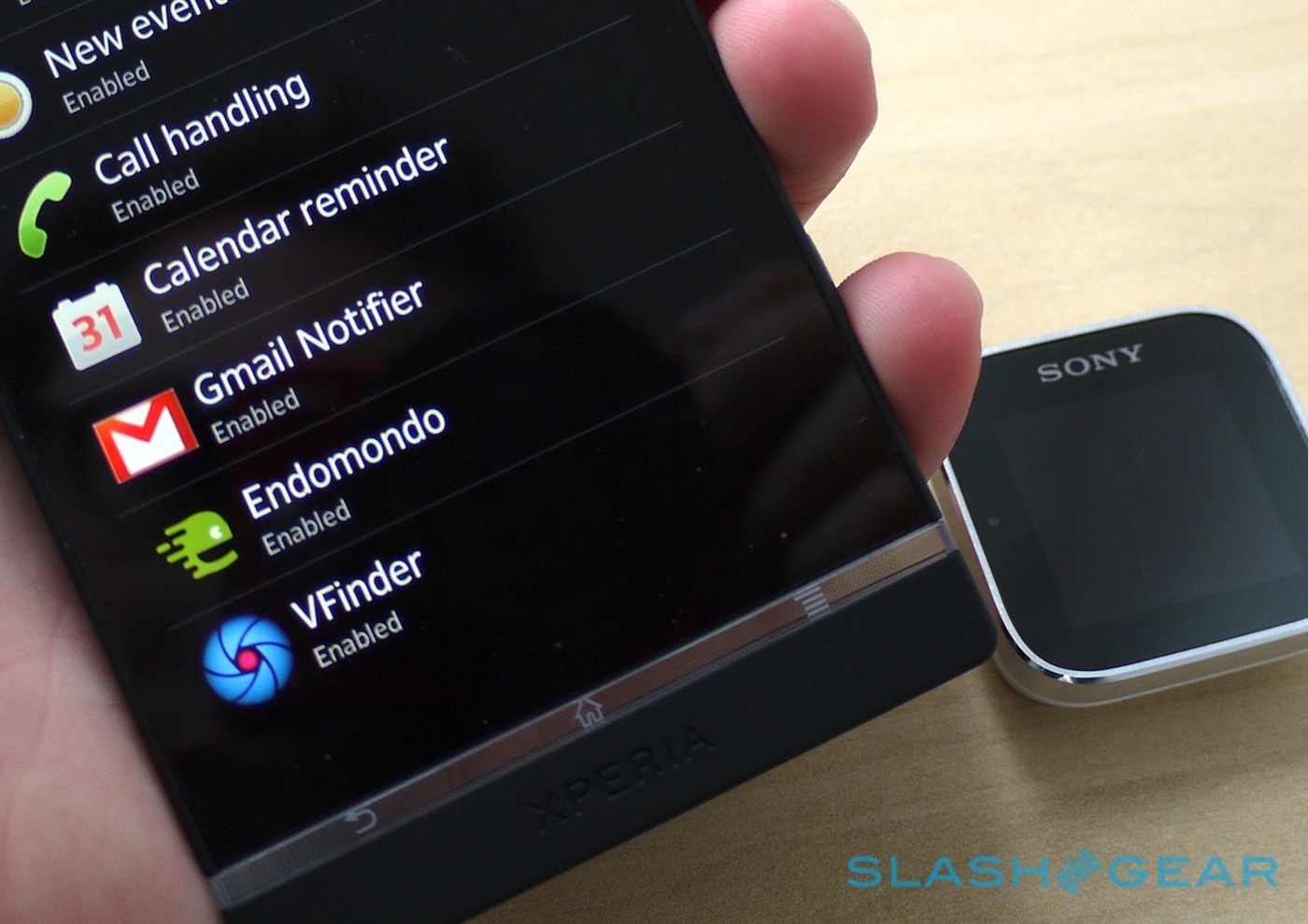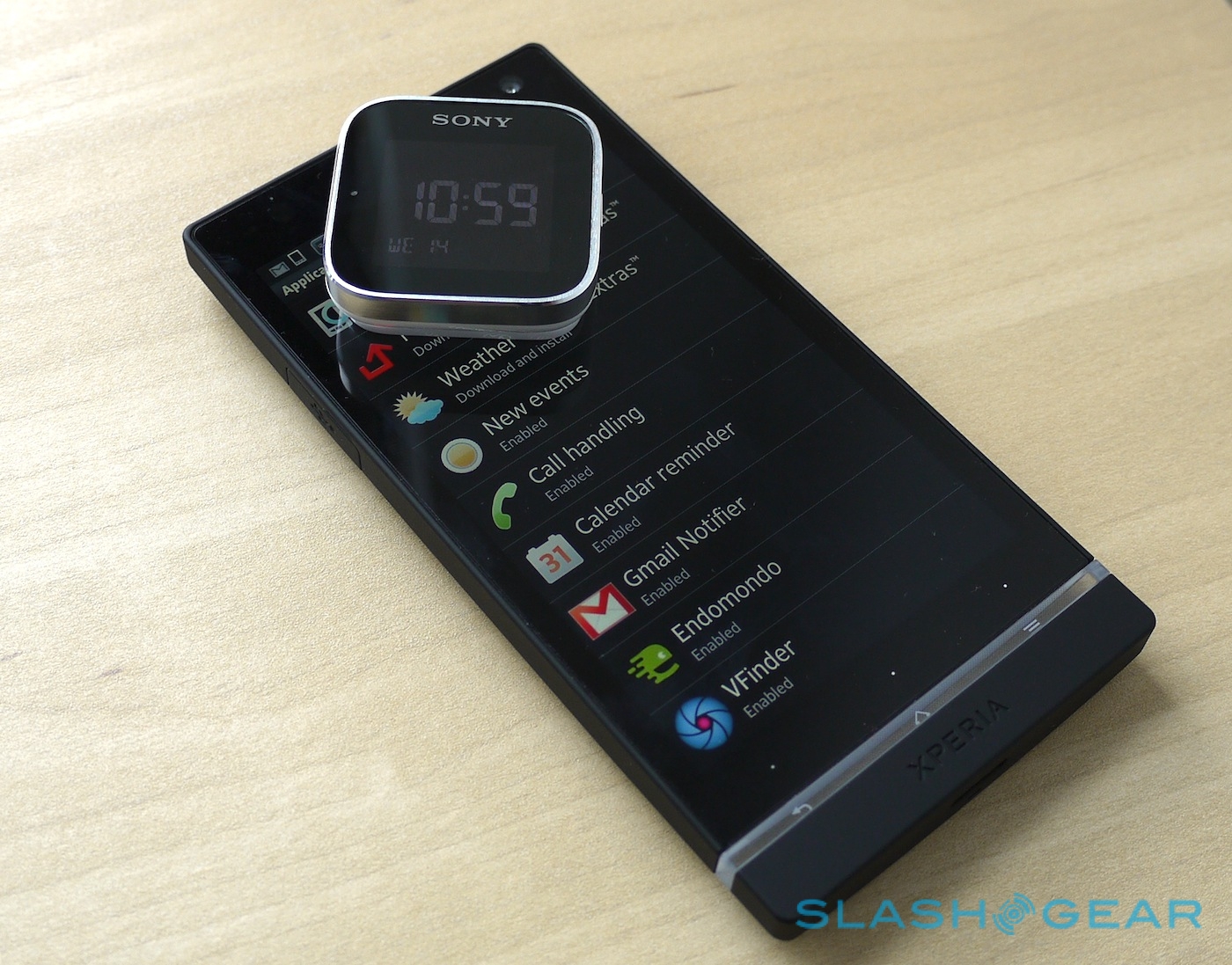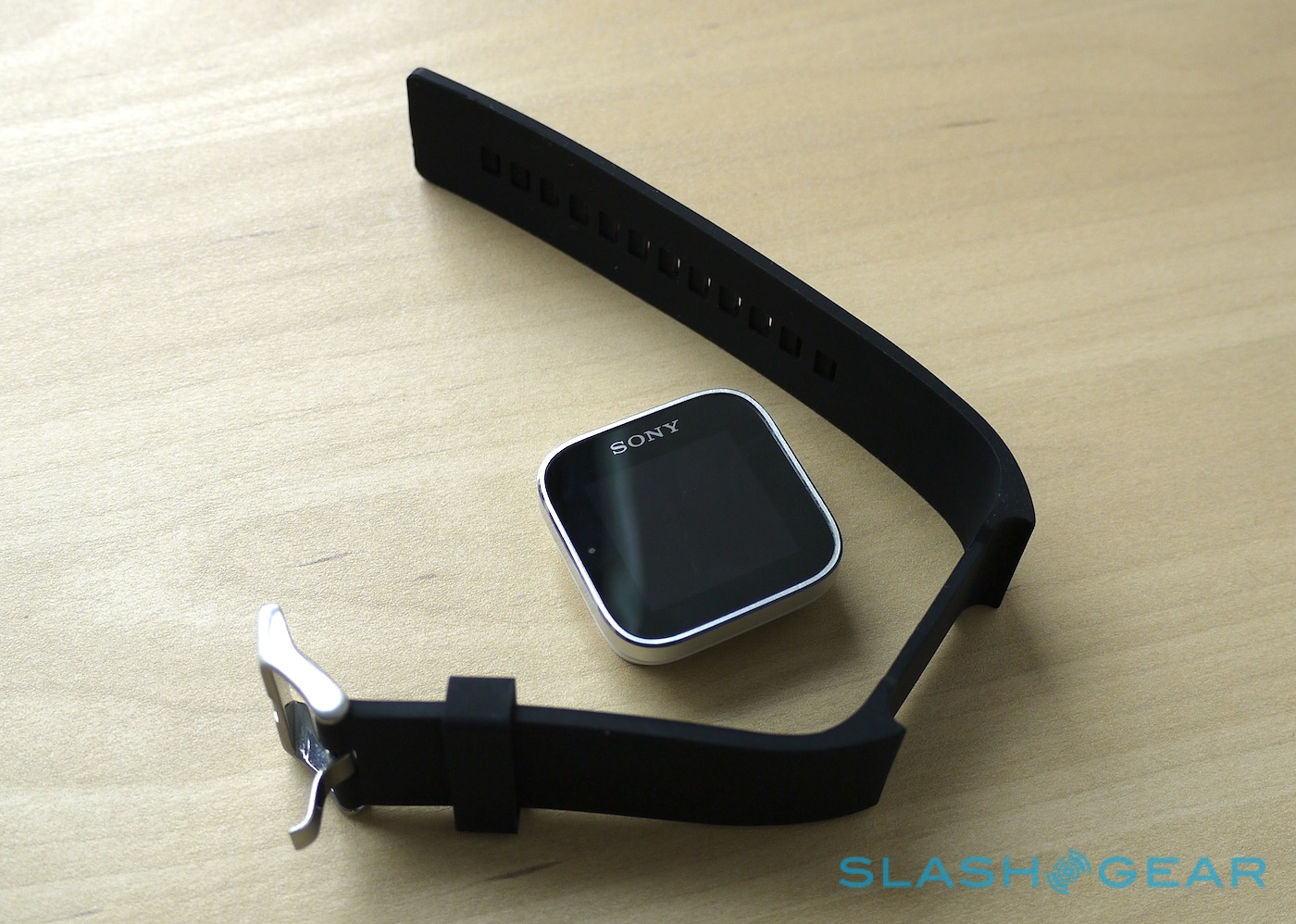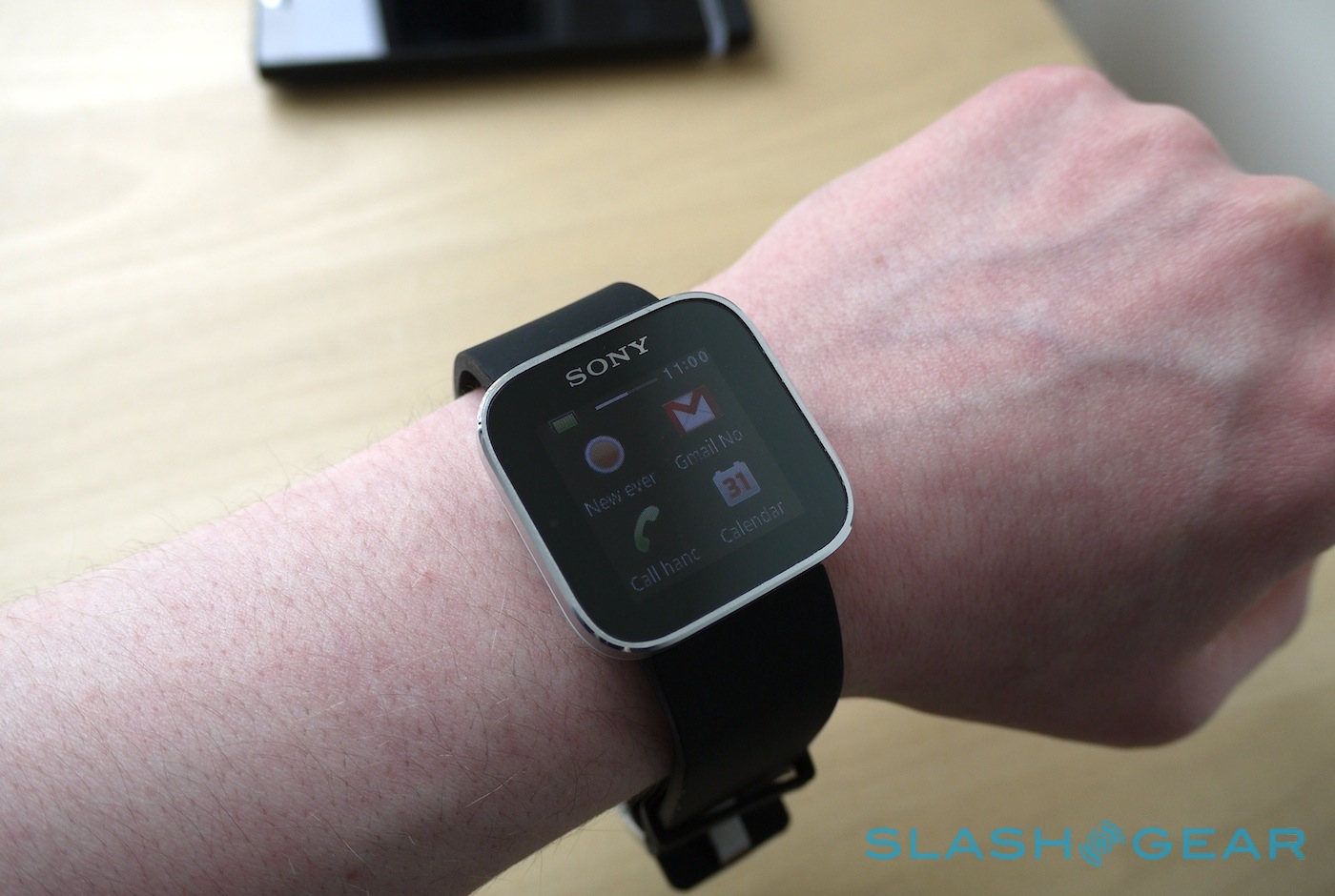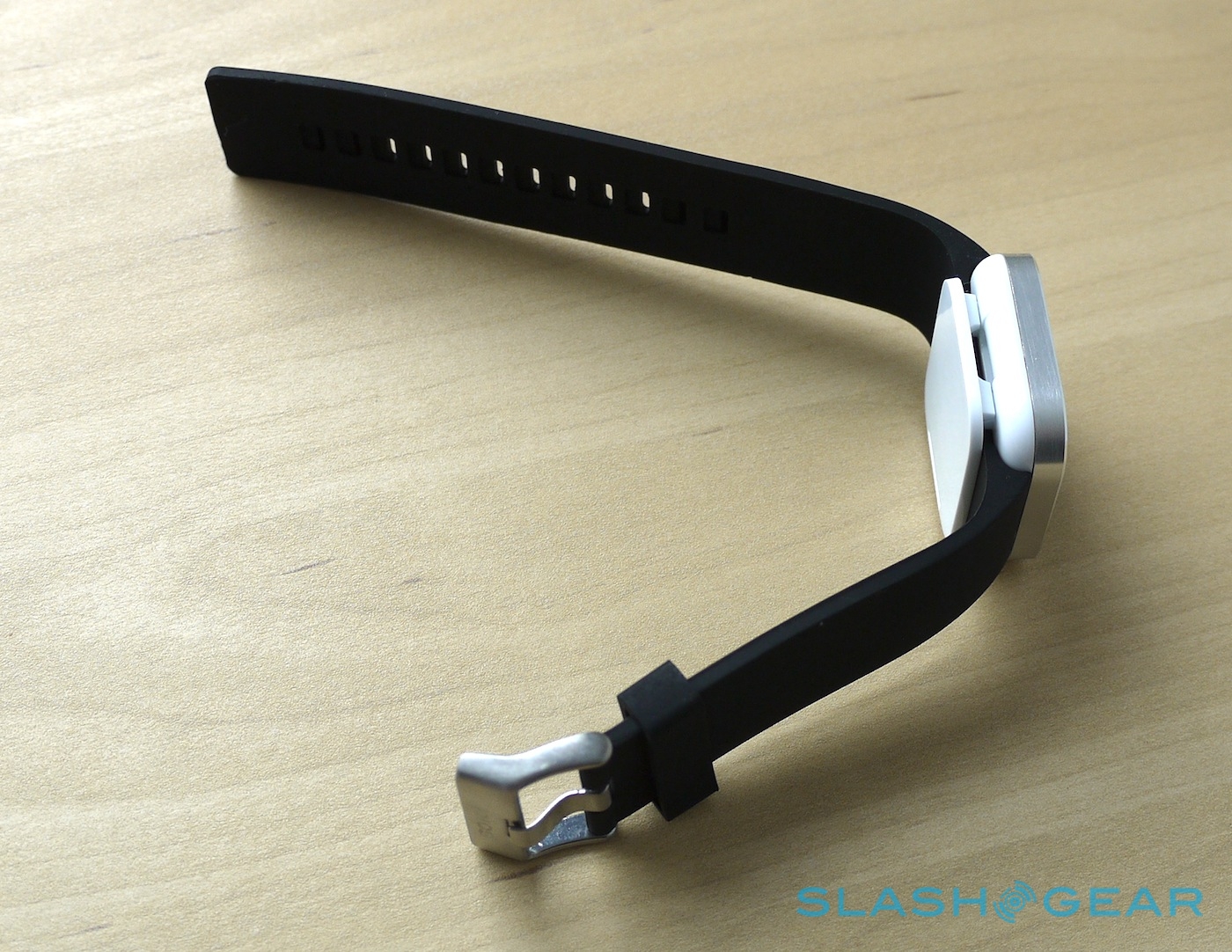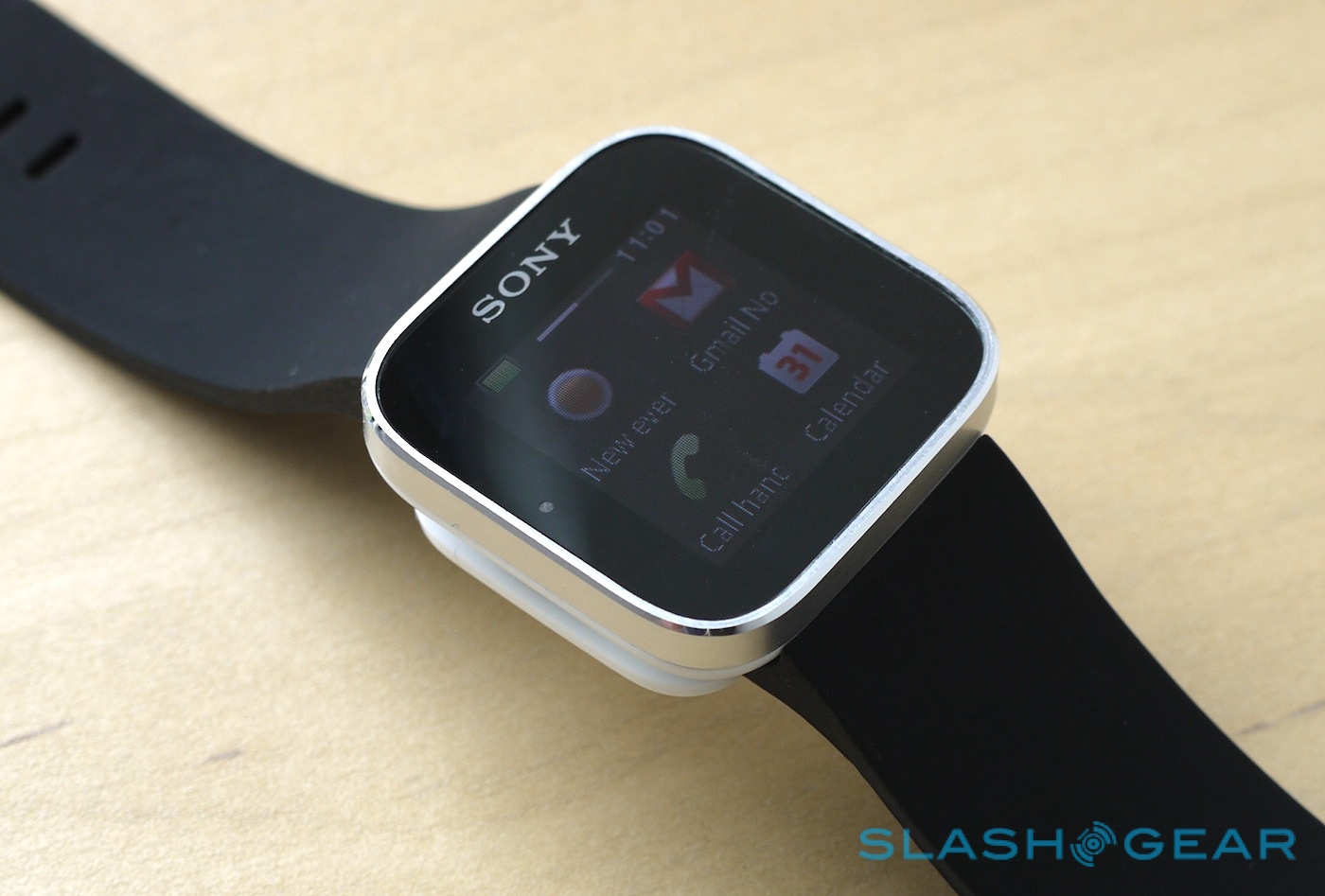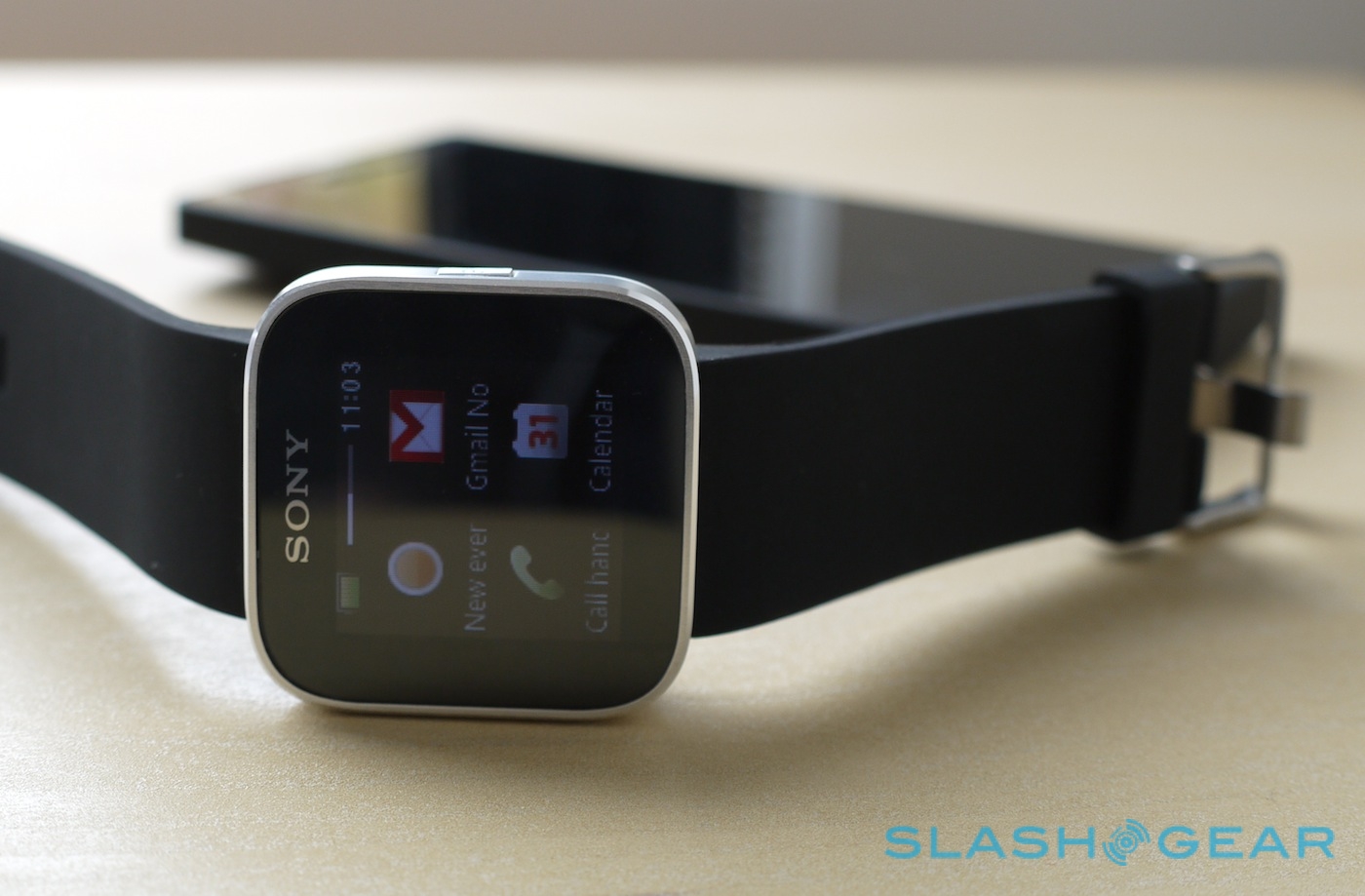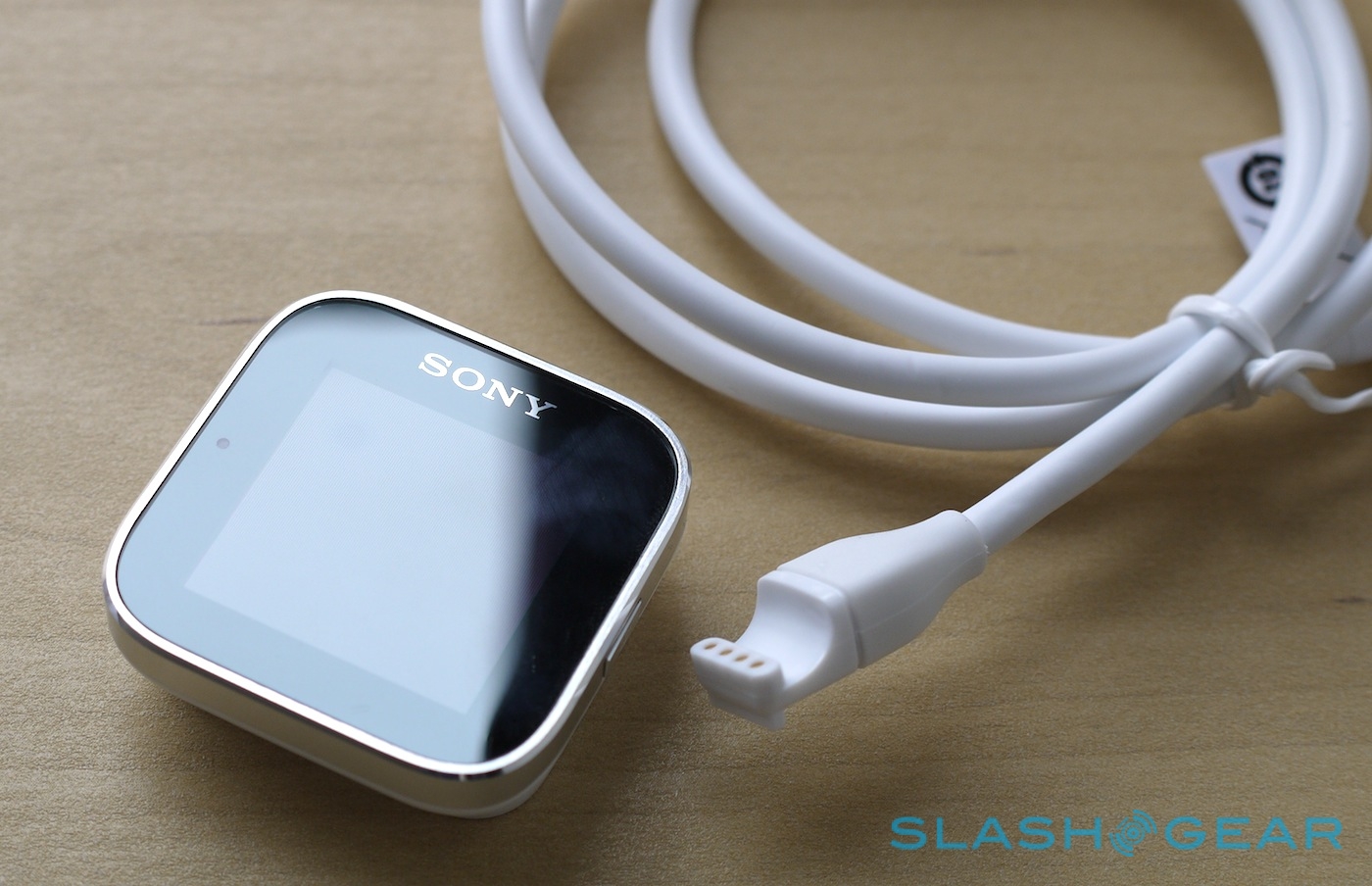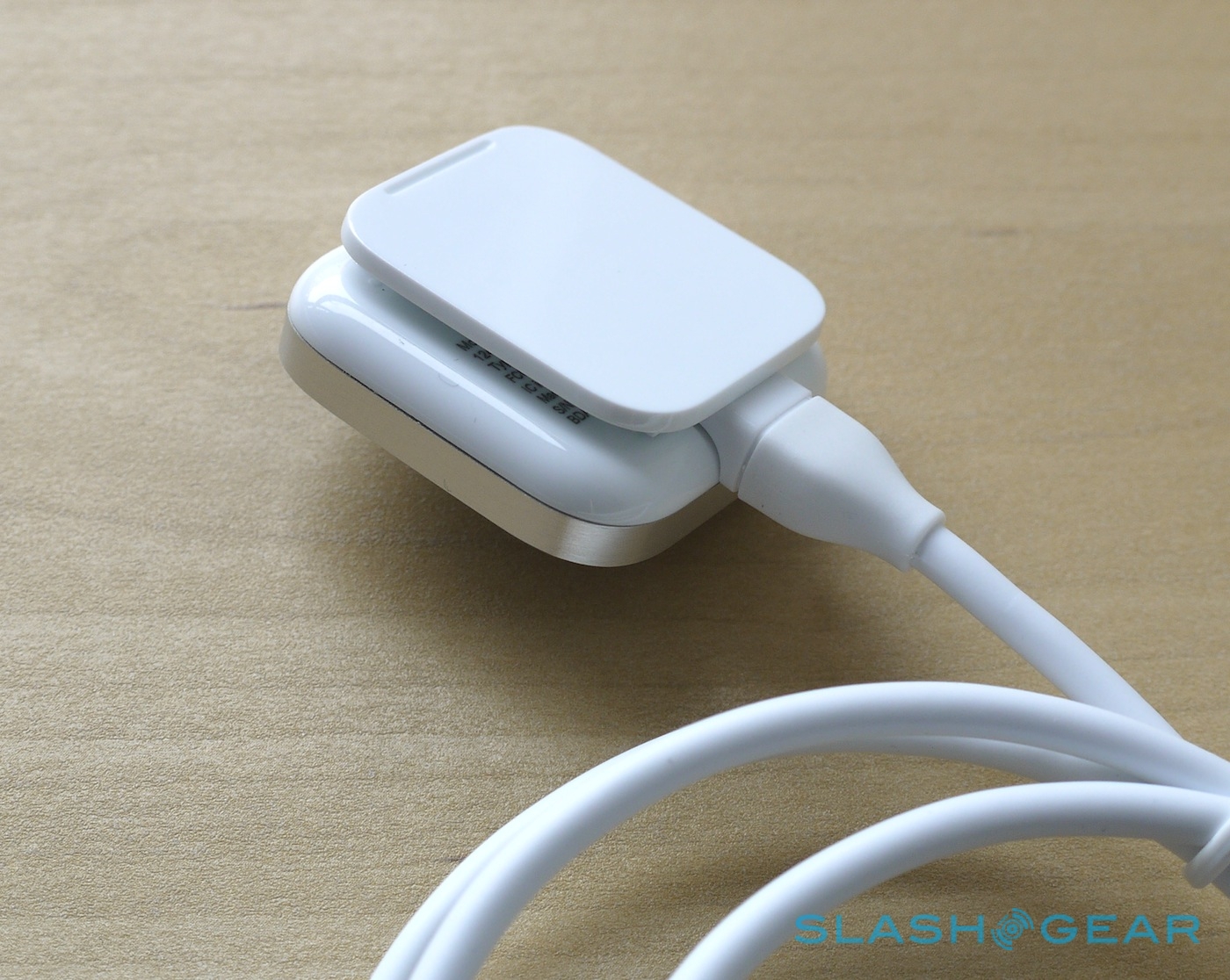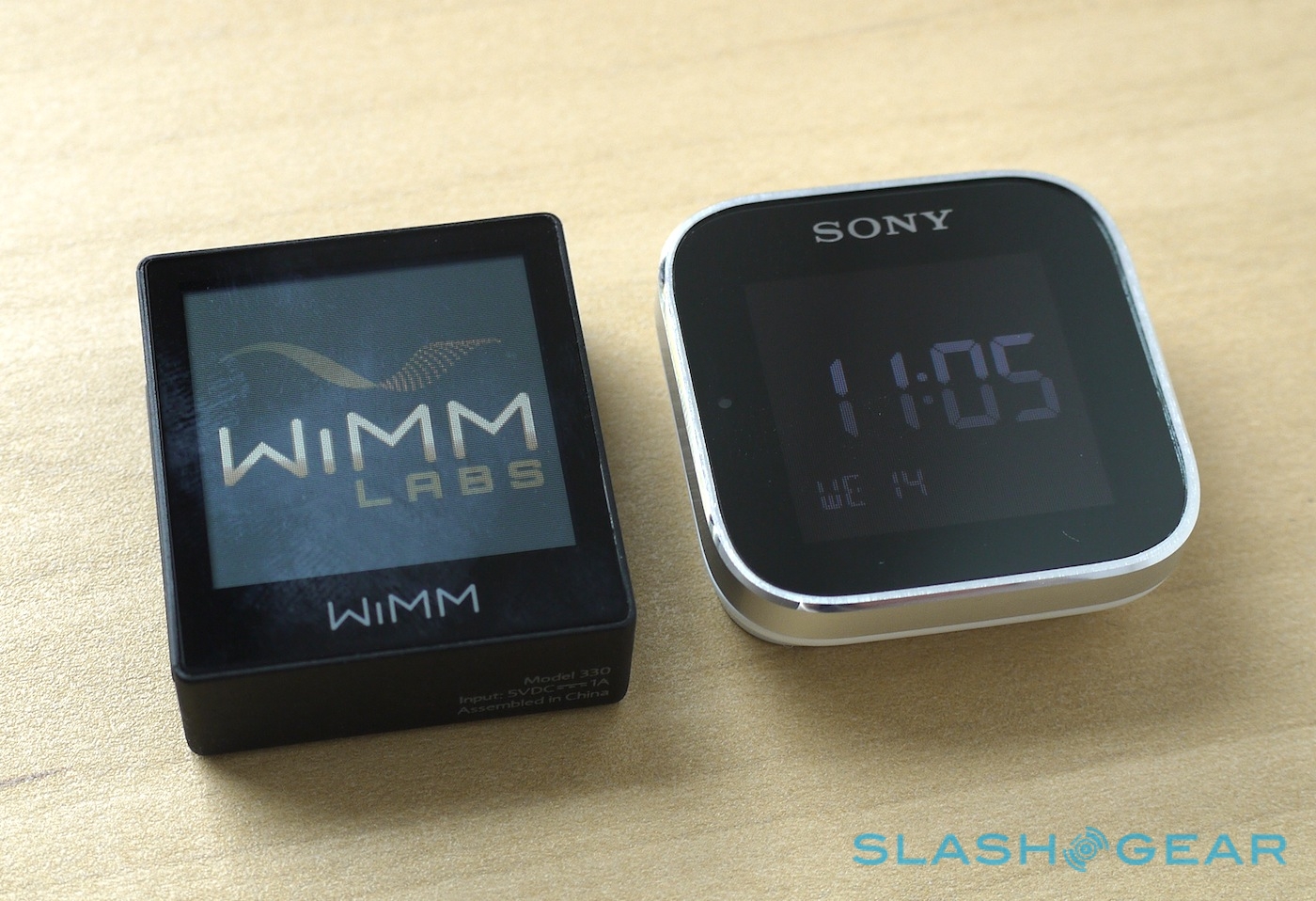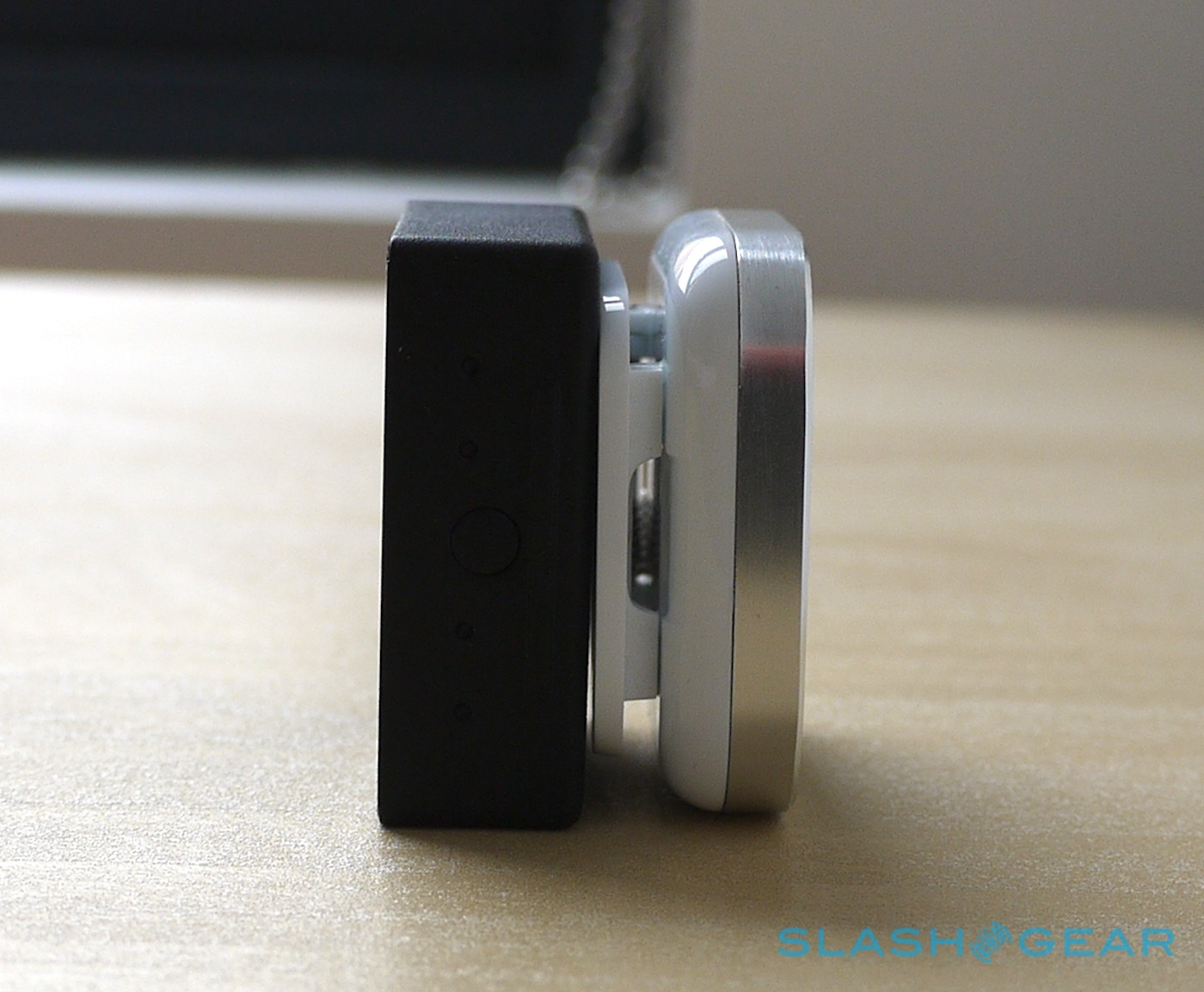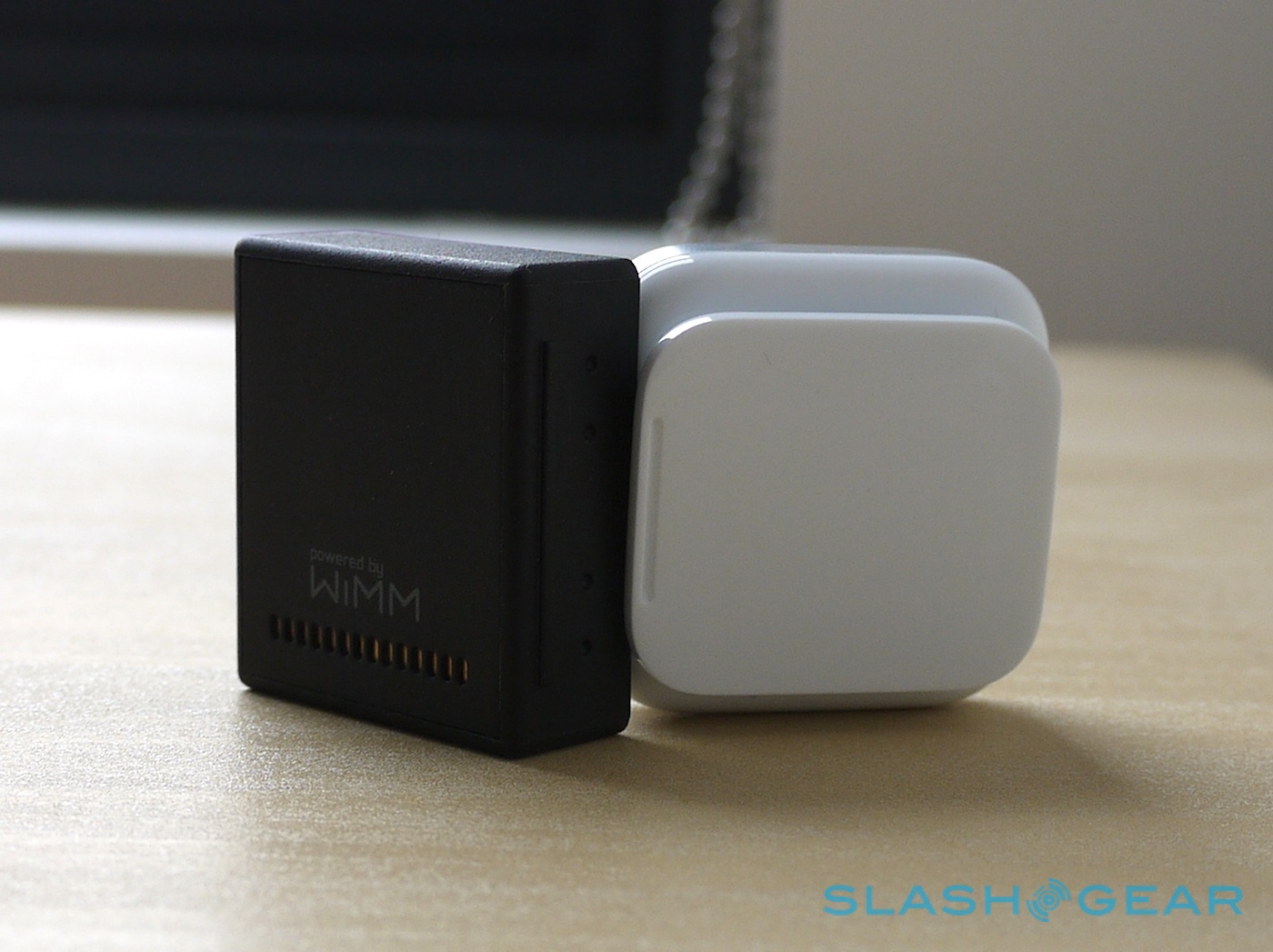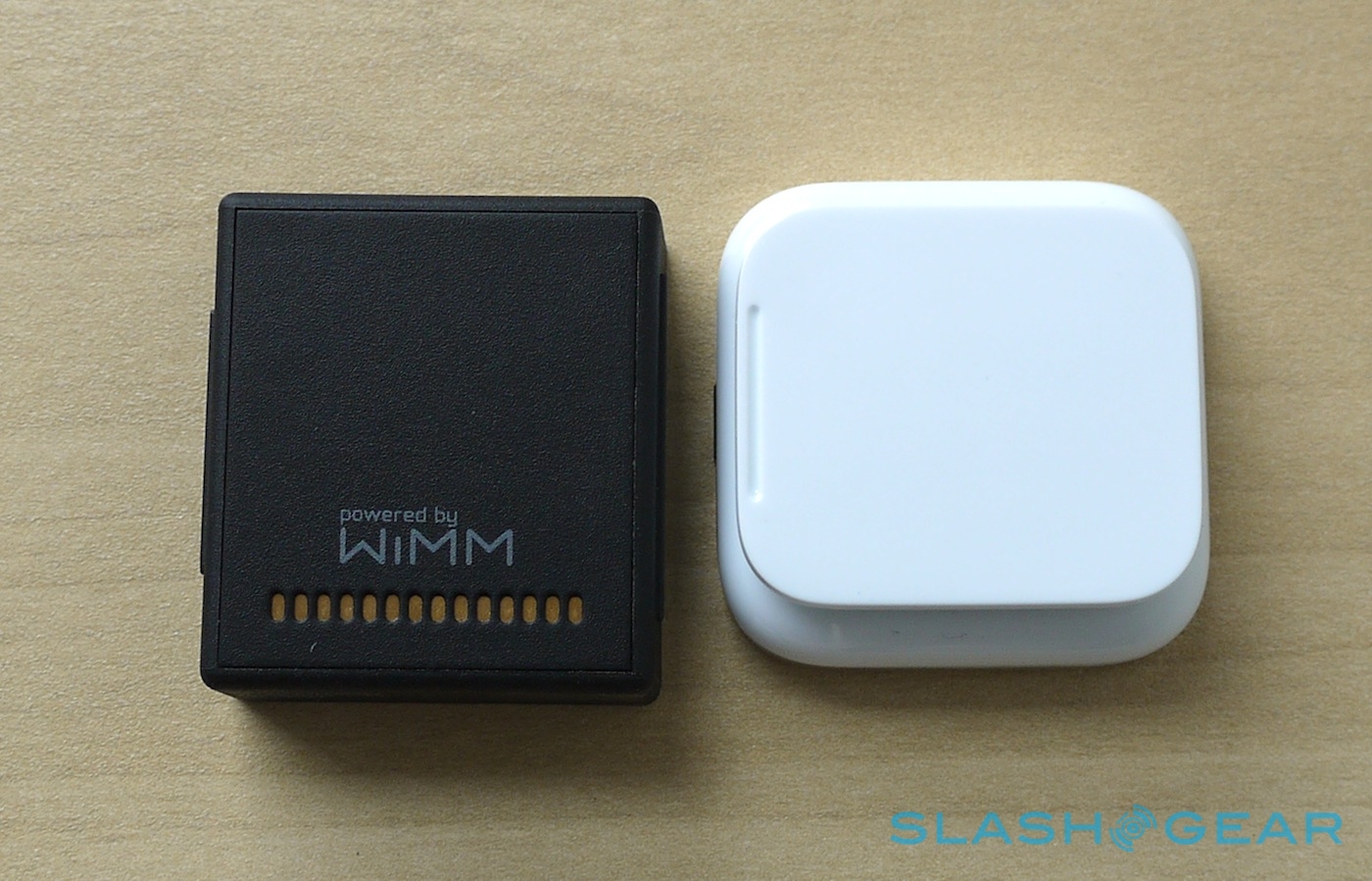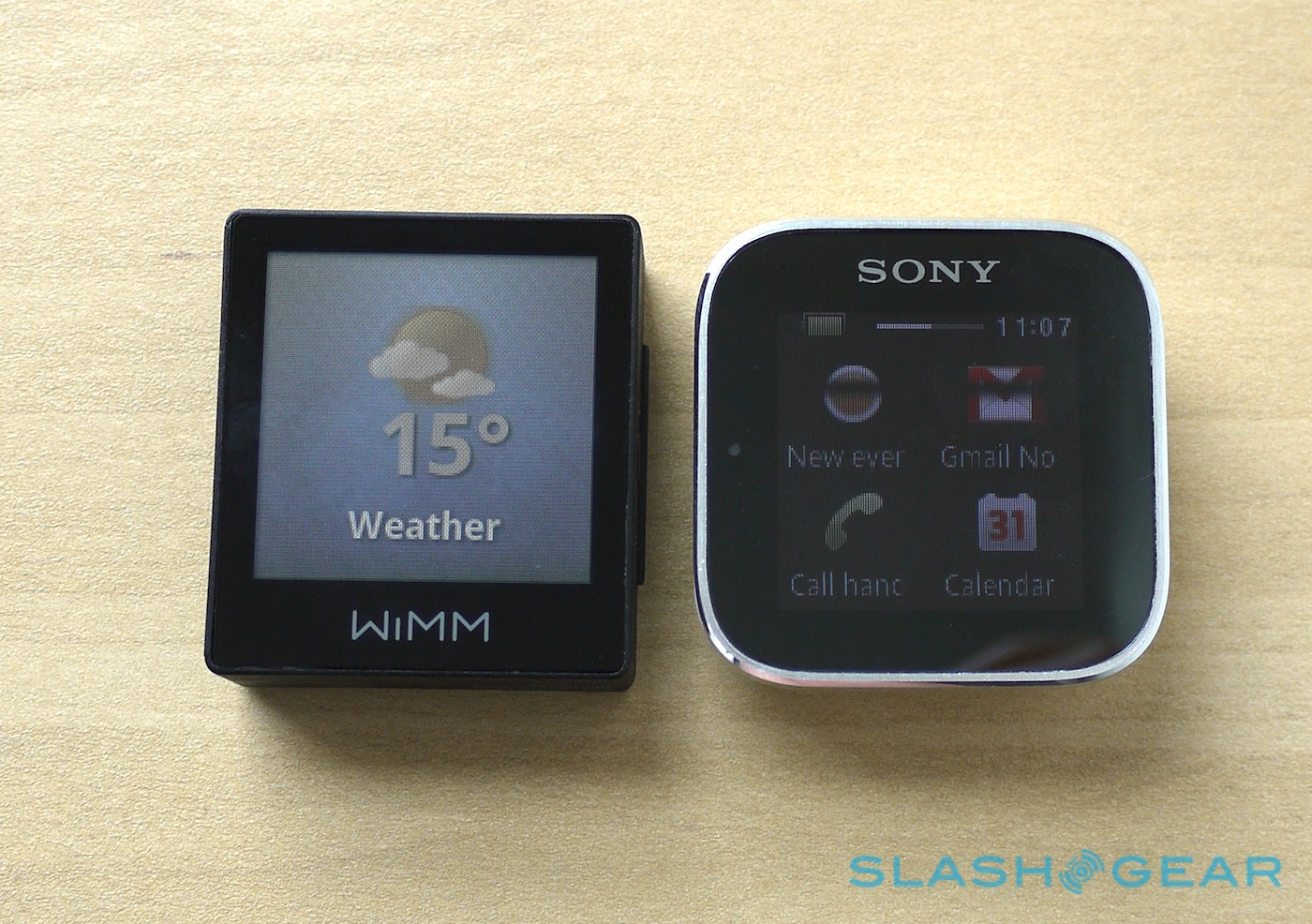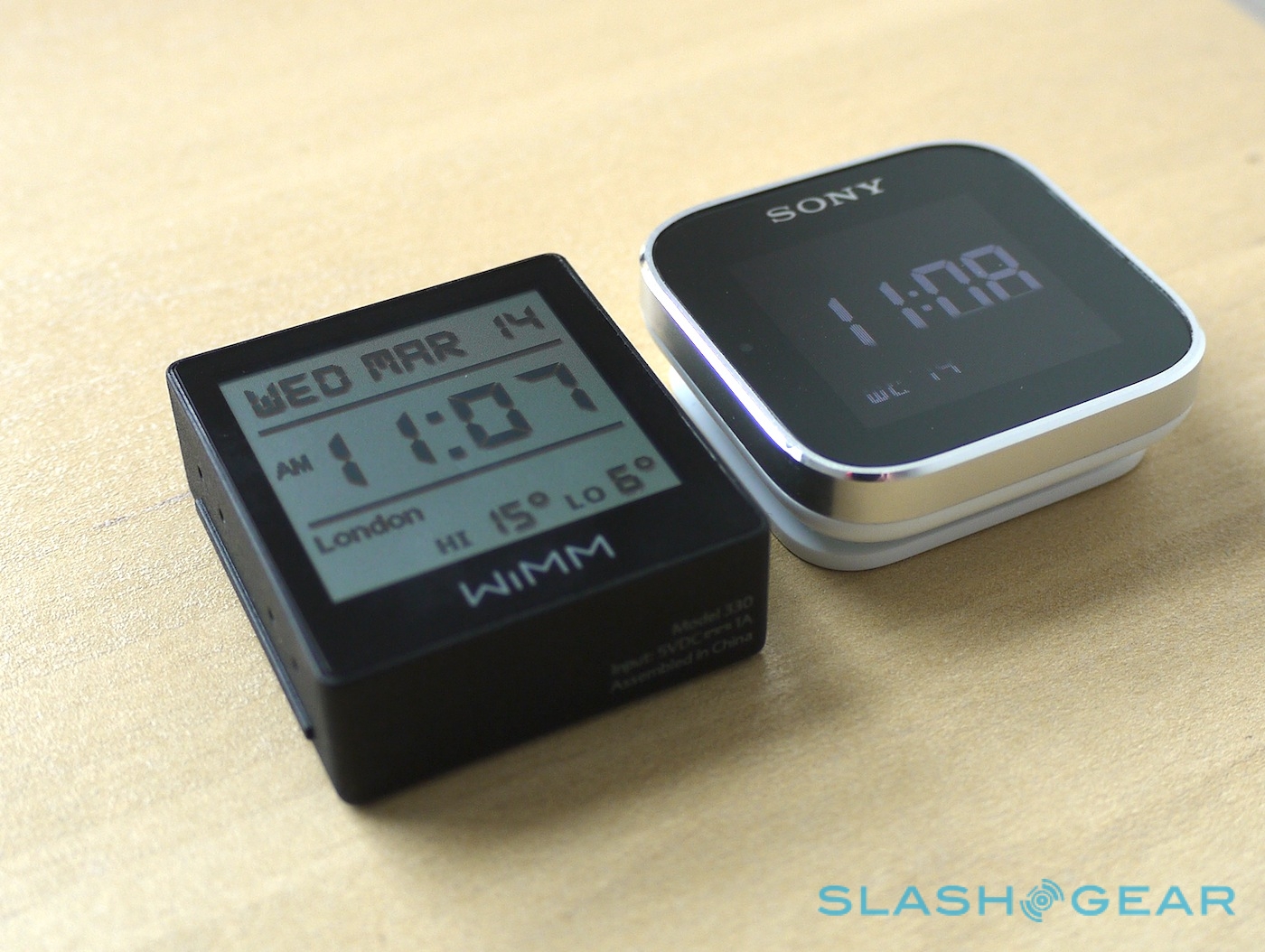Sony SmartWatch Review
Sony's first attempt at a smart watch, the Sony Ericsson LiveView, promised plenty and delivered disappointment, and so the company has returned with the Sony SmartWatch. The concept is the same – put a tiny sub-display on your wrist, so that you can monitor your phone's notifications from afar – but the hardware has received a welcome boost, with an OLED touchscreen promising more intuitive navigation. Is the SmartWatch the gadget your wrist has been waiting for? Check out the full SlashGear review after the cut.
Hardware
Unlike the LiveView, which was navigated by tapping touch-sensitive buttons around the edge of the bezel, the SmartWatch has a proper touchscreen. It's a small one, mind, a 1.3-inch color OLED panel running at mere 128 x 128 resolution and supporting two-finger multitouch gestures. The only physical control is a power button on the right edge.
Most of the watch is plastic, which makes it pleasingly lightweight: the main unit itself is 36 x 26 x 8 mm and15.5g, and Sony bundles a rubbery watch-strap that adds 26g. It's not as bulky as, say, the strap included with the WIMM One developer kit, but it's still not going to be mistaken for anything approaching luxury. The SmartWatch itself has a spring-loaded clip on the back that attaches it to the strap or your coat/bag.
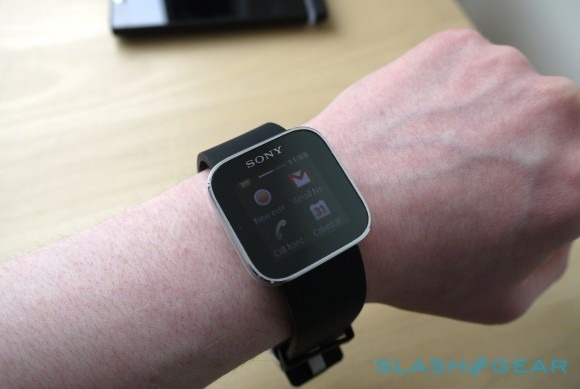
It's also used with the proprietary charging system. Rather than accommodate a microUSB port, the SmartWatch uses a special USB cable terminating with a hooked end, that clips into place against charging terminals. It's a clever approach, though it does mean you have to carry the cable if you want to be able to top the SmartWatch up on the move.
Inside there's a Bluetooth 3.0 radio – not Bluetooth 4.0, which counts low-power connectivity as one of its primary benefits – and a non-accessible battery that Sony says is good for up to a week of "low usage" or a day of "heavy usage." You also get a vibration alert and a tiny speaker for notifications.
Software
The SmartWatch's interface is reasonably straightforward. It defaults to a clock screen – the time and date pulled from your smartphone – in blue characters on a black background – then wakes up to show persistent battery life, a slider graphic to show side-scrolling app icons, and the time. Four icons are shown on-screen at any one time.
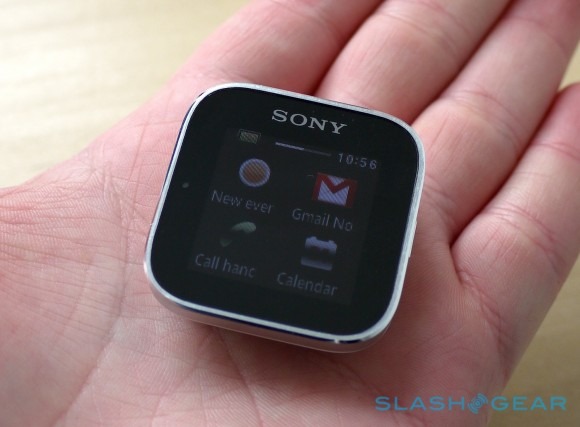
Navigation through the menus and apps is via taps and swipes, and is generally – with one key annoyance – simple. What isn't made obvious is the gesture to go back through the UI: a two-finger pinch. Unfortunately, the small size of the display makes this gesture feel cramped, and we'd rather have a single-touch motion do the same thing. There are also times when the buttons don't make use of the full screen – the "View in Phone" button is a good example, only occupying a small slice of an otherwise empty display – which feels wasteful given it's already a compact panel.
Sony SmartWatch hands-on:
The watch itself is only half the story, however. Your Android phone must be running Sony's LiveWare app with the SmartWatch plugin installed – both are available free from the Play Market, and recent Sony handsets should have the former already installed. Obviously the apps support Sony's range, but you can use certain third-party Android phones too. Sony has a list of those it has tested.
Unfortunately, the LiveWare app is somewhat frustrating in use. Selecting the SmartWatch from the accessory list – the same app is also used to trigger macros when, say, you plug the mains charger in – shows a list of possible functionality you can install to the watch itself: choosing one takes you to the Play Market, where they can be individually downloaded. After they install, there's no new icon: instead you jump back into the LiveWare app to handle any of the basic settings.
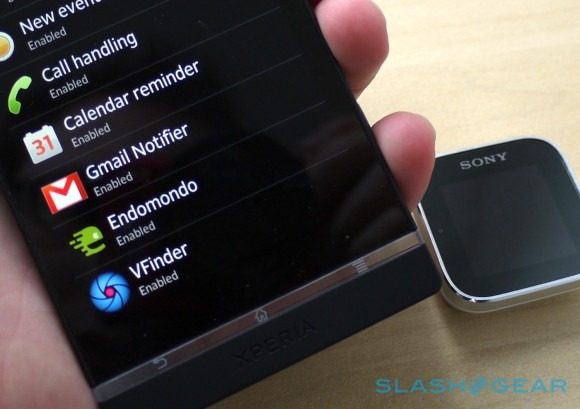
As a system it works, but it's far less streamlined than the in-app download store WIMM One has developed. The plus side is that you can install apps directly from the .APK file, though whether most users will benefit from that is questionable.
Performance
We tried the SmartWatch with both Sony's own Xperia S – running Android 2.3 – and a Galaxy Nexus running Ice Cream Sandwich, the latter absent from the tested compatibility list. One of our main frustrations with the LiveView was its tendency to drop the Bluetooth connection every so often, so we were pleased to see that the Xperia S and the SmartWatch stayed happily connected.
From there on, the usefulness of the SmartWatch varied. It's definitely a companion screen to your phone, not a replacement: the functionality each app offers is shallow, and the watch basically helps you decide whether or not it's worth pulling that phone out from your pocket or purse.
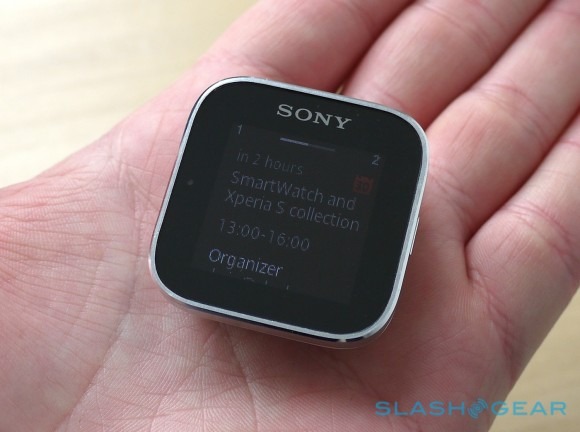
The call and text messaging features are straightforward: incoming calls show number and, if saved to the contacts, the name from your address book, as well as buttons to answer or reject. Still, if you answer it you can't use the SmartWatch as a wrist-worn speakerphone. Music playback can be controlled too, with volume, play/pause and track skip buttons on top of album art.
Twitter and Facebook functionality is basic, showing the contents of new tweets or statuses. You can Like those Facebook statuses from the SmartWatch itself, or open the specific message on your phone; the Twitter app allows you to save a single preconfigured reply to fire back from the watch, though the usefulness of that is limited.
The email app could be useful – showing notifications on a new message, with sender, subject line and the first line or so of the body-text, then allowing you to open the message up on your phone – but it unfortunately only works with the Sony Android Mail app. Gmail users, far more prevalent, get a third-party notifier app that flags up new messages but doesn't preview them.
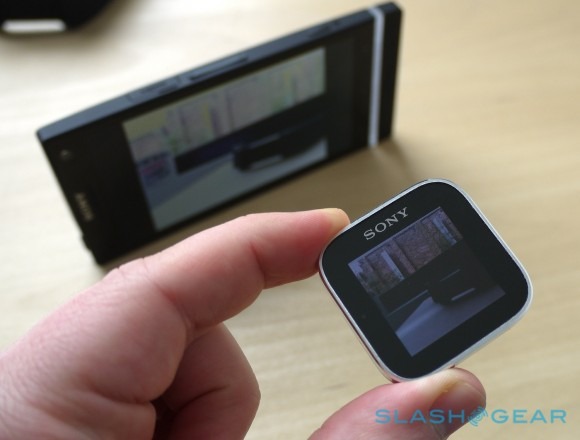
Another third-party app is the VFinder camera remote control, which streams a live view from the Xperia S' camera direct to the screen of the SmartWatch and, when you swipe up, takes a photo. You're obviously limited by the 10m Bluetooth range, and we found the app would usually crash if we flipped from portrait to landscape orientation, but it's a good demo for friends and useful for handsfree vanity shots.
Other apps show battery status of your phone, weather widgets, currency conversion and phonebook access, with varying degrees of stability. There are more on the way, too; exercise tracking app Endomondo is apparently in the pipeline, among others.
Our experience with the Galaxy Nexus proved less successful. Bluetooth connections were reasonably stable, but we had issues with the LiveView manager: widgets that said they had installed did not show up in the list of options. It's unclear if this is an Ice Cream Sandwich problem or something else, but we can't particularly hold Sony responsible as the Android 4.0 phone isn't among its list of tested models.
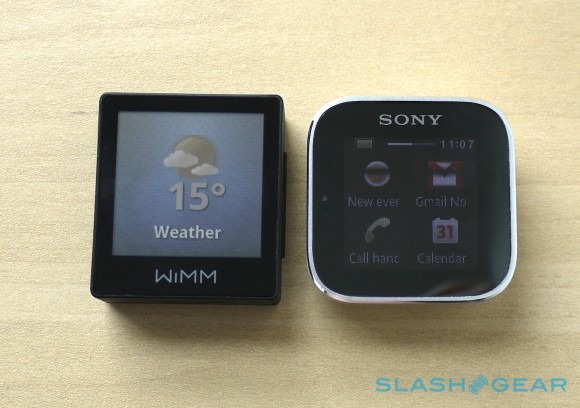
The OLED display is a little crunchy with graphics and texts, thanks to its relatively low resolution, but decent indoors. Outdoors, it's fairly visible though we found ourselves shading it with a hand when in brighter light. In contrast, the transflective display on the WIMM One proved far easier to see in the same conditions.
Battery
After a full day of wearing, with pinging Gmail notifications, some incoming call and message alerts, and a little pretend-spy play with the remote camera viewfinder app, we still had battery life showing on the SmartWatch. You'd have to be a low-volume user to get the full week Sony suggests out of it, mind, and we can't see that audience being especially interested in the SmartWatch.
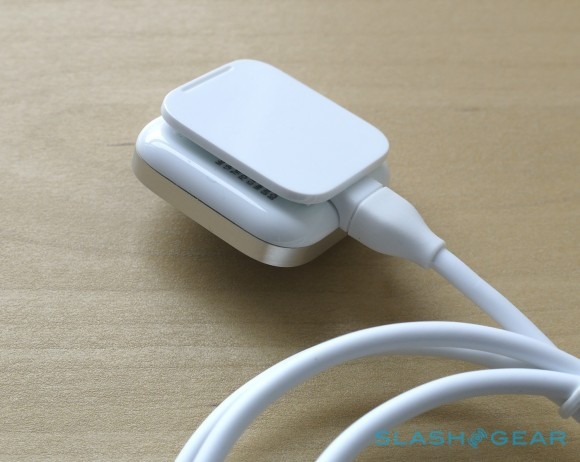
Wrap-Up
Compared to its predecessor, the Sony SmartWatch is a vast improvement: for a start it can keep hold of a Bluetooth connection. Still, what worth it brings to most users remains questionable. If you regularly field calls and receive – but don't need to reply to – text messages then it could be useful; if you generally feel the need to reply to your messages and emails, then you're still going to be pulling your phone out anyway.
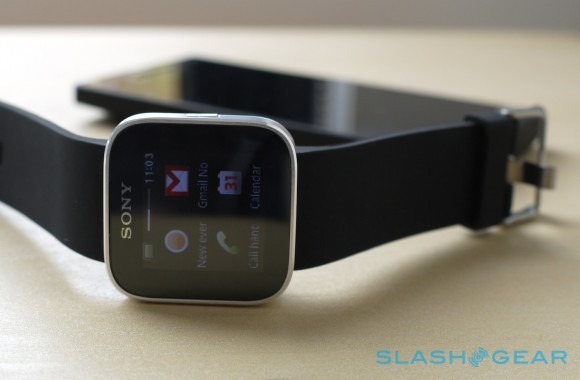
Third-party app support may address that in the coming months, and we can see fitness buffs appreciating the remote functionality from incoming apps like Endomondo along with the music control. Still, we can't help but wish Android voice commands were supported: that way, you could talk into your SmartWatch and dictate a reply instantly. Meanwhile, with Sony pushing its NFC SmartTags for the Xperia S, it would've been nice to be able to hold the SmartWatch next to one and remotely trigger functionality on the handset.
At $119.99 or £89.99 when it arrives in mid-April, it's an expensive sell for something that, for the most part, remains a gimmick. We're not convinced with the usability of the SmartWatch's display when outdoors, either, preferring the panel technology on the WIMM One. Still, Sony's watch is the cheaper of the two, and while the unit itself is bigger, it's overall less bulky thanks to the smaller watch strap. Nonetheless, there's a long way to go before accessories like the Sony SmartWatch break into the mainstream.


